














DRS4DNXTDRS6ANXT


You’re looking at it! Furuno’s award-winning Radar gives you clarity & target separation like no one else. Don’t take our word for it. See for yourself. Scan here, and we’ll show you!



























Do you love boating? Then you know how fun and relaxing it can be on the open water. But you also know that things can go wrong sometimes, like storms, accidents, theft, or injuries. That’s why boat insurance is so important. Here are some reasons why.
• Boat insurance can help you pay for damage to your boat, or to other boats or docks, up to specifed limits.
• If you borrowed money to buy your boat, your lender may require insurance. And if you want to explore different places, some marinas or waterways may ask you to show proof of insurance.
Progressive Casualty Ins. Co. and af fliates Coverages subject to policy terms and conditions.
• Boat insurance can also come in handy if you need an on-water tow, jump start, or fuel delivery with optional Sign & Glide® coverage. And if your boat sinks, boat insurance can pay for the cost of removing it from the water (if removal is legally required).
Get boat insurance from Progressive and enjoy the peace of mind that comes with it.
Scan to get a quote in as little as 4 minutes
Go to progressive.com to learn more.


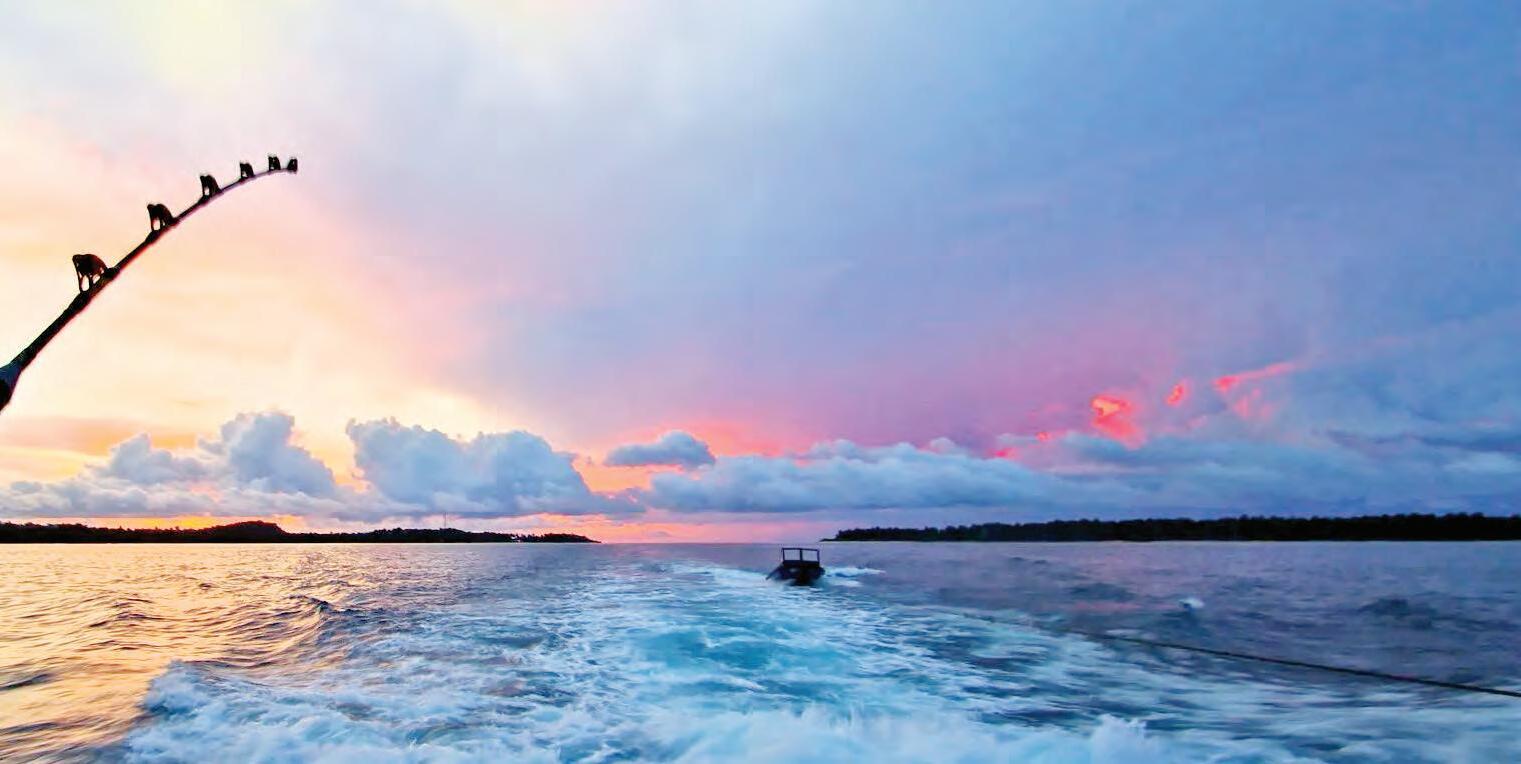







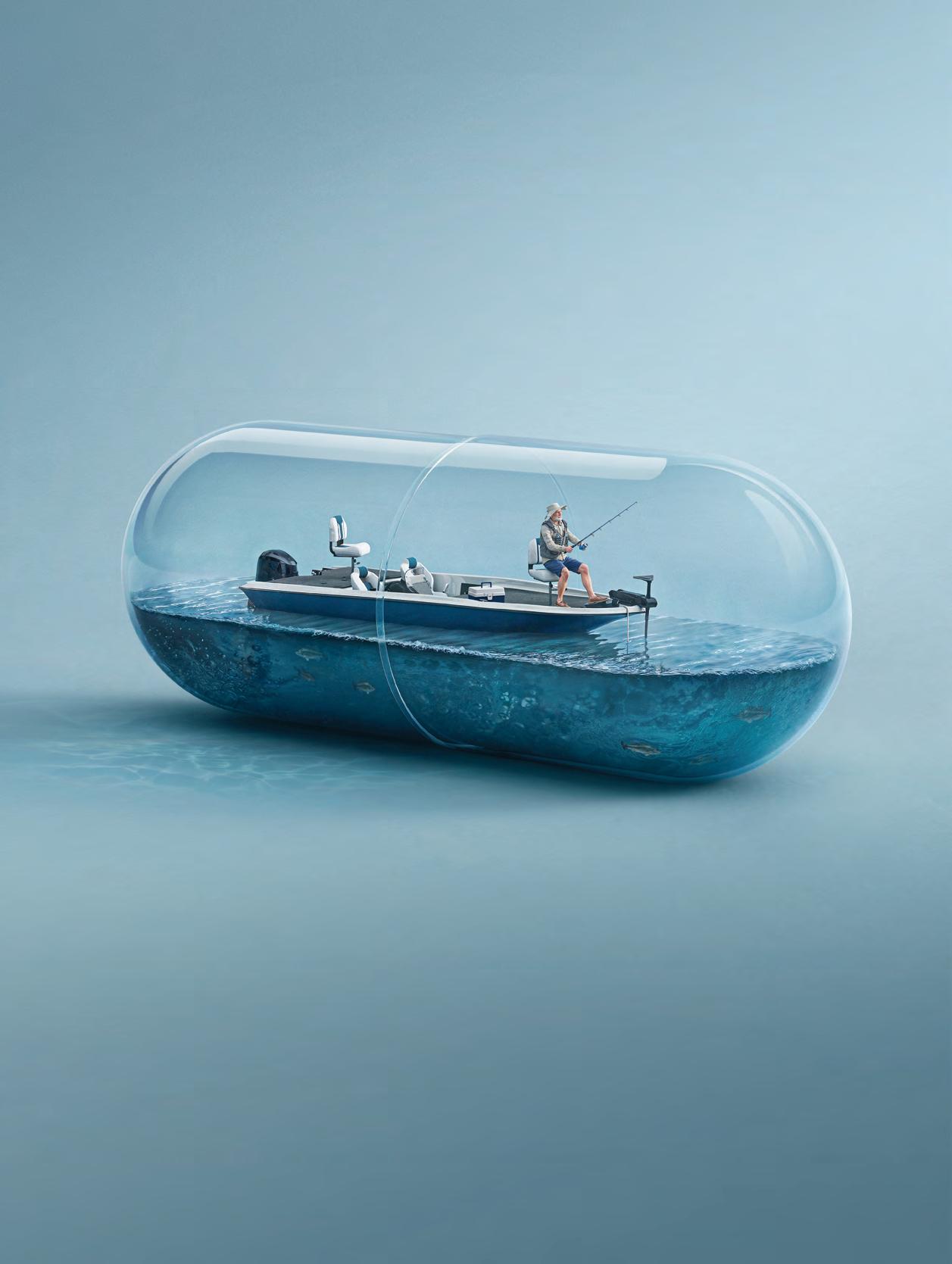
















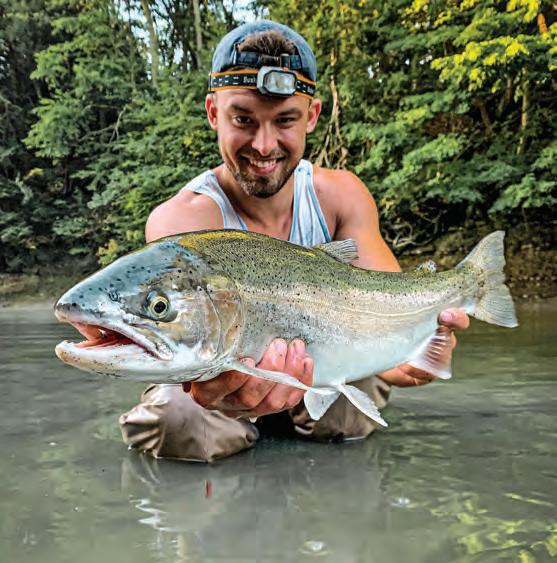
Trout don’t grow huge on a diet of insects alone, so Budkey fshes 2- to 3-inch-long bait lures to take advantage of the carnivorous tendencies of big fsh. Tese fsh have good eyesight, so he fshes 4-pound-test and said light line can be the diference between catching dozens of fsh or nothing at all.
Now… battling 10-pound trout in current with light line is tricky, to say the least.
“You really have to wear them out. you all the way down the creek and back up it, jumping and thrashing,” Budkey said. “If you try to muscle them, they’ll break you o

Part-time guide Stephen Budkey catches a lot of outsized trout fshing the streams of western Pennsylvania. Much of his success with giant 6- to 15-pound rainbows and browns has to do with location, but he also uses some interesting tactics that specifcally appeal to large fsh.
Te setting is on Lake Erie tributaries. Tese streams vary in size, but generally Pennsylvania is known for smaller fows. Te key to their productivity is the lake. Lake Erie feeder streams experience steelhead runs a lot like the rivers of the Pacifc Northwest. Fish grow large gorging on baitfsh in open water before pushing into tributaries in early fall to spawn. Te lakerun rainbow trout in this migration are called steelheads, and there are bruiser brown trout that run up out of the lake, as well. Budkey also has access to a stretch of privately managed tailwater, which is an obvious target-rich environment for very large trout. Regardless of where he’s fshing, he uses tactics and gear that might seem odd to
trout anglers in other regions.
If you’re a snooty fy fsher, set your tweed hat aside for a minute. Tis might not convince you to pick up a spinning rod, but Budkey has an undeniable knack for catching giant trout, and you might just learn or adapt something from his style of fshing.
Reading water in western Pennsylvania is the same as it is anywhere. Trout like the cold, welloxygenated water of broken water and rifes. When targeting large trout, Budkey said he looks for the deepest runs or waterfall holes in the creek he’s fshing.
“I’m talking about creeks that are sometimes just the width of your car, and these fsh will just stack up in there,” he said. “And when they stack up, they really stack up. It’s wild.”
Budkey said clients who are decent anglers can have 25-fsh days that include trout that might weigh 6 to 10 pounds. Most of these trout were originally stocked by the state, but there is some reproduction, and holdover fsh that have been in
To even the odds, Budkey fshes a 10-footlong noodle rod, which is extremely absorb shock during the fght and protect that light line. Another important factor is a big net for landing fsh, and it doesn’t hurt to have someone else to serve as net-man. Sometimes it’s not possible to bring big fsh to hand, and a net man can wade out to get them.
When trout are aggressive, they are super aggressive, Budkey said. He likes a good-old foating Rapala when the trout are actively chasing and fshes a 2-inch F05 or a 2.75-inch F07 tied on with a loop knot. He just throws it into the current, gives it a jerk to get it wobbling and lets it sit there until a fsh crashes it.

If fsh want something on or near the bottom, Budkey fshes jigs. Trout Magnet jigheads in 1/32 and 1/64 ounce—the lightest you can get away with—paired with Gulp! sof plastics are deadly. Trout are suckers for these scented plastics, and he likes the 2.5- and 3-inch minnows as well as Killer Crawlers and Pinched Crawlers.
Te technique with the jigs is slow. Budkey said he just wiggles the rod tip to give the lure some action.
“It’s almost like I don’t want to move the jig toward me very much, at all. I just want it to sit there and wiggle,” he said. “It’s like shaking a donut in someone’s face at the gym. Tey can’t handle it. Tey’ll run out and grab it.”
Afer the take, it’s time to start worrying about how to battle that fsh to the net on super-light line. Budkey said that is the most fun part of trout fshing, and he loves nothing more than showing other people how to experience it.
See some of Budkey’s tactics on YouTube @FishFightsPA.


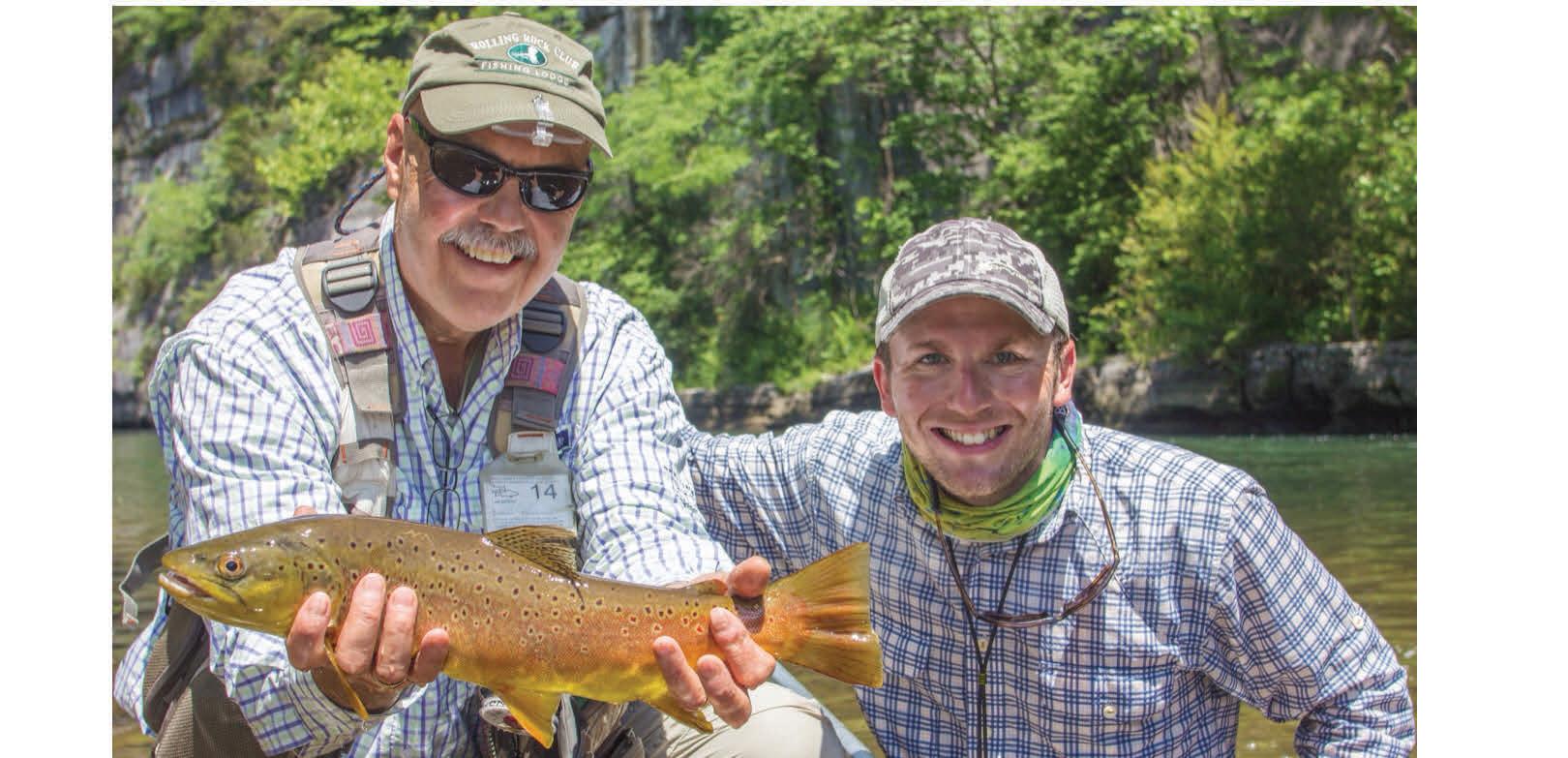




In mid-June, NOAA Fisheries announced a one-day recreational season for red snapper in the South Atlantic. Although there was widespread grumbling and gnashing of teeth by recreational anglers, it did not come as a surprise to pretty much anyone.
First the season: Red snapper harvest will be open for recreational anglers in the South Atlantic, from North Carolina through Florida, on July 12. Te limit is one fsh per angler.
Te date is subject to change in case a small craf weather advisory is projected. Any change in the date of the recreational season will be announced in the Federal Register, Fishery Bulletin, and an announcement via NOAA Weather Radio.
Now the reasoning: In 2008, NOAA’s stock assessment indicated red snapper in the South Atlantic were in bad shape and devastatingly overfshed. Over the last 16 years, NOAA has essentially shut down recreational fshing for the species, and catch limits for commercial fshing have been kept very low. Not surprisingly, it worked! Populations rebounded to the point where data indicates red snapper are now more plentiful in the South Atlantic than at any time since such data existed. What’s more, the fshery continues to improve ahead of the projected recovery timeline.
Tis year, instead of allowing greater access to the fshery, NOAA decided to tighten already draconian restrictions. Te overall quota for red snapper was cut by 25 percent for 2024. As the fshery has improved, recreational anglers have gone from a ridiculously short fve-day season in 2019 to an absurd one day of fshing in 2024.

According to NOAA Fisheries, the red snapper fshery is in a “recovery trap.” Abundant red snapper have led to increased incidental catches by anglers, and NOAA extrapolates that data into a formula for catch-and-release mortality. Basically, they’re telling us that there are so many red snapper that anglers are killing too many of them by catching and releasing them.
Te result is tighter regulations in an infexible system, where highly questionable data is used to shut down access to a public resource. We’re not even going into numerous occasions in recent years when NOAA has been forced to admit its data is shockingly fawed.
According to the American Sportfshing Association, work is underway to improve data collection for the South Atlantic red snapper fshery.
In the meantime, try not to get in a boat wreck during the one-day mad dash to catch your one red snapper from the Atlantic. Or you can just trailer your boat to the Gulf of Mexico, where the states fnally managed to bludgeon some sense into federal fsheries managers a few years ago.
For more information, go to coastalanglermag.com.














Not only are these hefty bars one full Troy ounce of real, .999 precious silver, they’re also beautiful, featuring the crisp image of a Morgan Silver Dollar struck onto the surface. That collectible image adds interest and makes these Silver Bars even more desirable. Minted in the U.S.A. from shimmering American silver, these one-ounce 99.9% fine silver bars are a great alternative to one-ounce silver coins or rounds. Plus, they offer great savings compared to other bullion options like one-ounce sovereign silver coins. Take advantage of our special offer for new customers only and save $10.00 off our regular prices.
What makes them iconic? The Morgan Silver Dollar is the legendary coin that built the Wild West. It exemplifies the American spirit like few other coins, and was created using silver mined from the famous Comstock Lode in Nevada. In fact, when travelers approached the mountains around the boomtown of Virginia City, Nevada in the 1850s, they were startled to see the hills shining in the sunlight like a mirror. A mirage caused by weary eyes?





No, rather the effect came from tiny flecks of silver glinting in the sun.
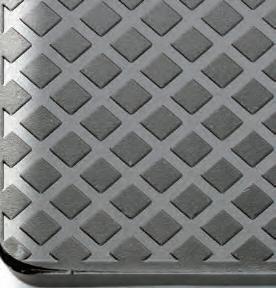





While no one can predict the future value of silver in an uncertain economy, many Americans are rushing to get their hands on as much silver as possible, putting it away for themselves and their loved ones. You’ll enjoy owning these Silver Bars. They’re tangible. They feel good when you hold them, You’ll relish the design and thinking about all it represents.
These Morgan Design One-Ounce Bars make appreciated gifts for birthdays, anniversaries and graduations, creating a legacy sure to be cherished for a lifetime.
Order More and SAVE
You can save $10.00 off our regular price when you buy now. There is a limit of 25 Bars per customer, which means with this special offer, you can save up to $250.
Hurry. Secure Yours Now! Call right now to secure your .999 fine silver Morgan Design One-Ounce Silver Bars. You’ll be glad you did.
One-Ounce Silver Morgan Design Bar
$49.95 ea.
Special ofer - $39.95 ea. +s/h
SAVE $10 - $250
Limit of 25 bars per customer
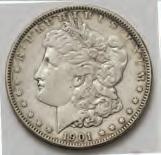
SHIPPING over $99!
time only. Product total over $99
Welcome to the best day of the week—the day before your next fshing trip! If you’re going ofshore tomorrow, it’s time to make a game plan, and a look at current Sea Surface Temperature (SST) charts is the frst step. With knowledge of accurate surface temps, chlorophyll imagery and other environmental factors, you can home in on areas that are likely to hold baitfsh and feeding predators.
By Mark Ambertto consider when targeting gamefsh. It provides shelter and feeding opportunities for all marine life. While you can stumble upon fsh just about anywhere in the ocean, you’ll locate more on and around structure.
Large underwater structure defects current and pushes nutrient-rich water toward the surface, creating areas where bait concentrates and holds. Also remember that weed lines are a key form of structure on the edges of the Gulf Stream.

A reasonably priced satellite service is a small price to pay when compared to rising fuel prices and time spent running in search of gamefsh. Here are a few of the factors SST charts can help you decipher and improve the odds of fnding fsh.
Color Breaks: Te boundary areas between blue and green water, ofen referred to as color breaks, will typically stack up bait and hold above-average numbers of gamefsh.
Chlorophyll is the beginning of the food chain for marine life. Find it and you have a good chance at locating bait and fsh. Temperature and chlorophyll breaks ofen correspond with color changes. So, once you’ve reviewed the images and located the general area of a color break, this becomes an area of interest.
Structure & Current: Structure is critical
If you can fnd a color change that corresponds with structure, this is where you want to begin fshing. If everything lines up, there’s a good chance upon arrival that you’ll see marine life including birds, porpoise, fying fsh and other bait. Tis doesn’t mean you won’t catch fsh in of-colored water, but there’s a much better chance you’ll fnd concentrations of bait in or around the edges of areas where green and blue water interact.
Tides from inlets also play a role in water clarity, creating rips and weed-line formation. Bait will concentrate along the edge, especially where this water pushes up against the waters of the Gulf Stream. Look for these demarcation lines on incoming and outgoing tides.
Learn to read these vital signs both on and of the water using charts. If you can consistently

fnd areas that hold bait, you’ll always have a shot at your quarry. You will have become a top predator!
Mark Ambert, IG @marksgonefshing_™

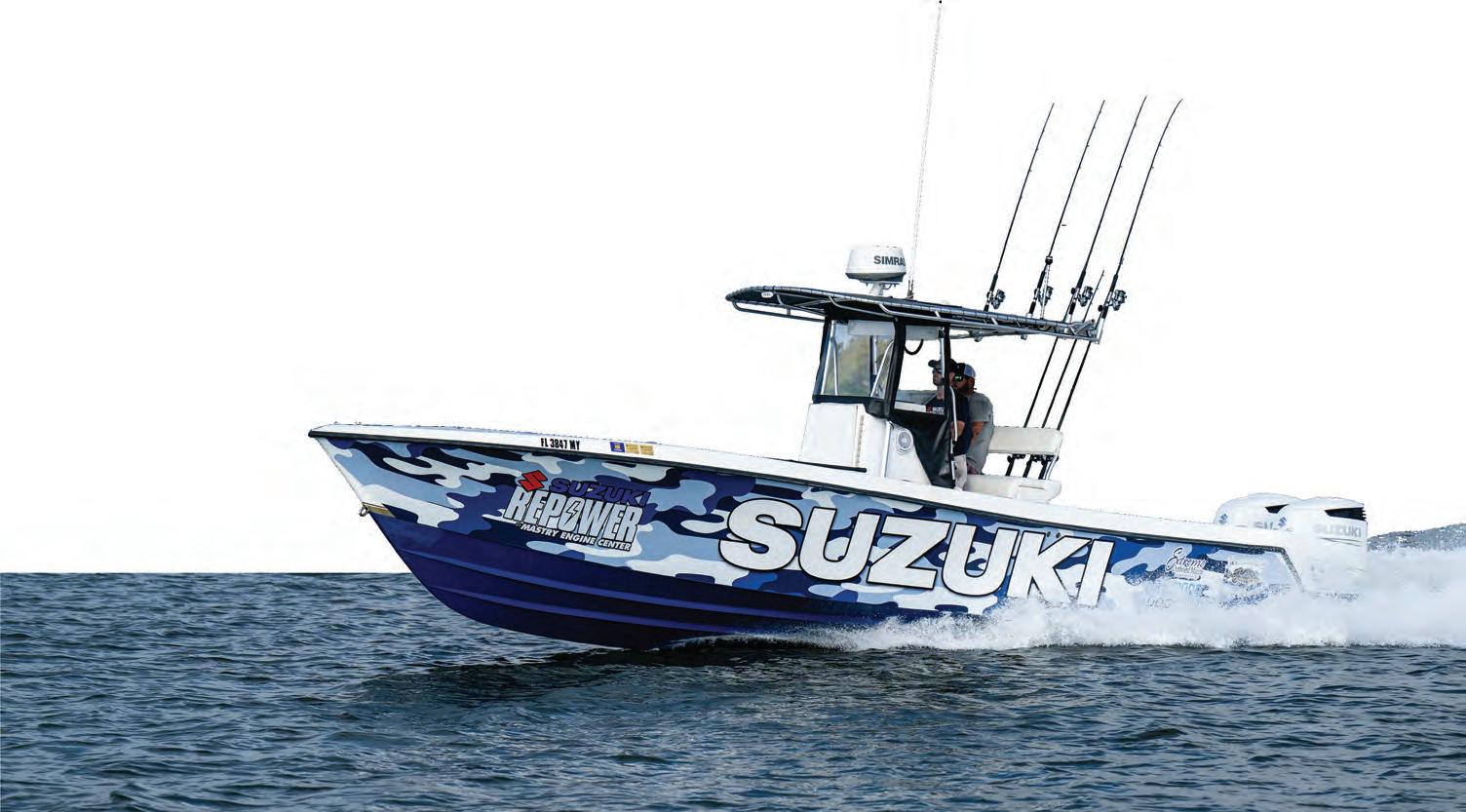










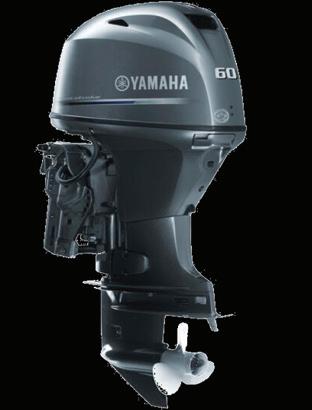




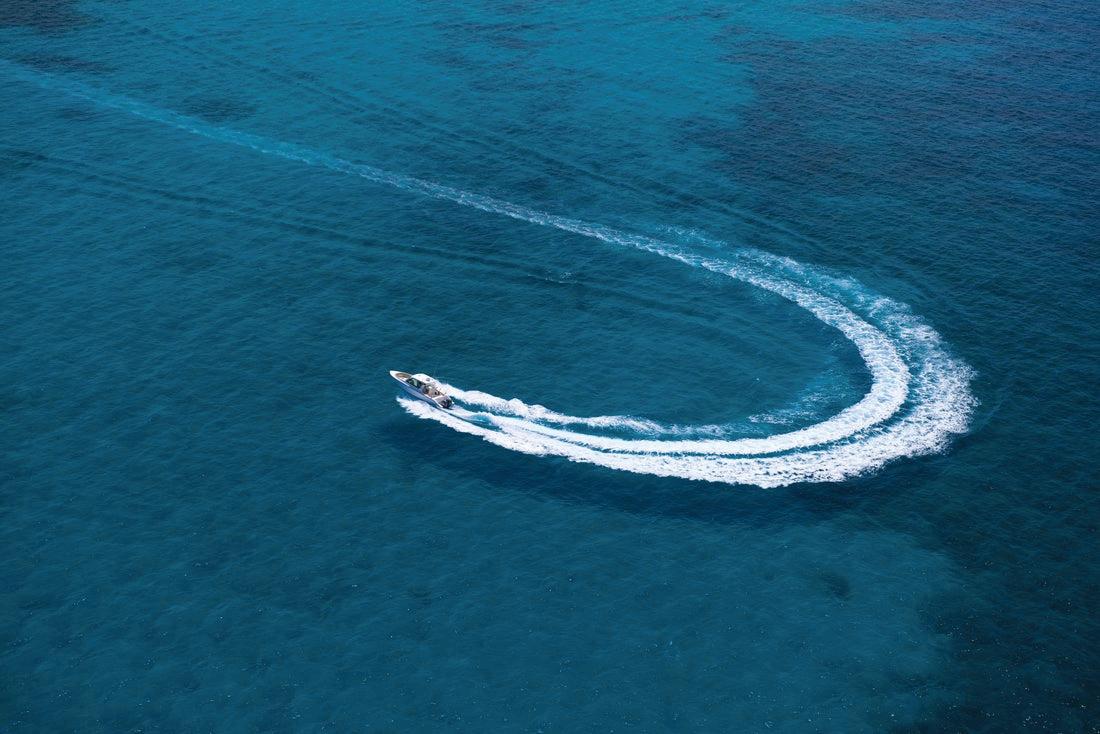
 By Mark Ambert
By Mark Ambert


The electric reel is a game changer for highspeed jigging. Electric provides some distinct advantages in comparison to hours spent manually cranking jigs at high speed through the water column.
With this style of jigging, I’m talking about working heavy jigs for big fsh on deep structure. Te key to catching fsh is fnding areas that consistently hold bait. Look for reefs, hills, and larger wrecks in deep water that hold baitfsh. Tis is where you’ll fnd feeding fsh.
Check your sonar screen frequently and look for “scratches” or fsh feeding in the water column. We usually assign one person to call out depth changes along with depth of marked fsh. Tuna can be found from 250 feet up to the surface. Highspeed cruisers like wahoo and kingfsh prefer the upper 50 feet of water, while amberjack will be close to structure. Jigging and adjusting depth to target fsh is more efcient under electric power, and the most difcult part of the electric game is picking the right equipment that works together.

Simplicity, along with reasonable size and weight, are key considerations for long days targeting big game fsh. I landed on the Piscifun Kraken X electric reel, and it has become indispensable in my arsenal.
Te Kraken is moderately priced and uses the same proven Japanese motor technology as many of its competitors. Te 33 pounds of max-drag were put to the test unexpectedly in the reel’s frst trip during a battle with the ultimate slugger—a 40-pound-class amberjack. Tey’re not called “reef donkeys” for nothing! Tis reel made short work of that AJ without heating up or momentarily shutting down, which is a common issue for overtaxed electric reels. I fsh a lef-handed model when high-speed jigging, and the Piscifun PB5000 battery pack provides all-day power and complete
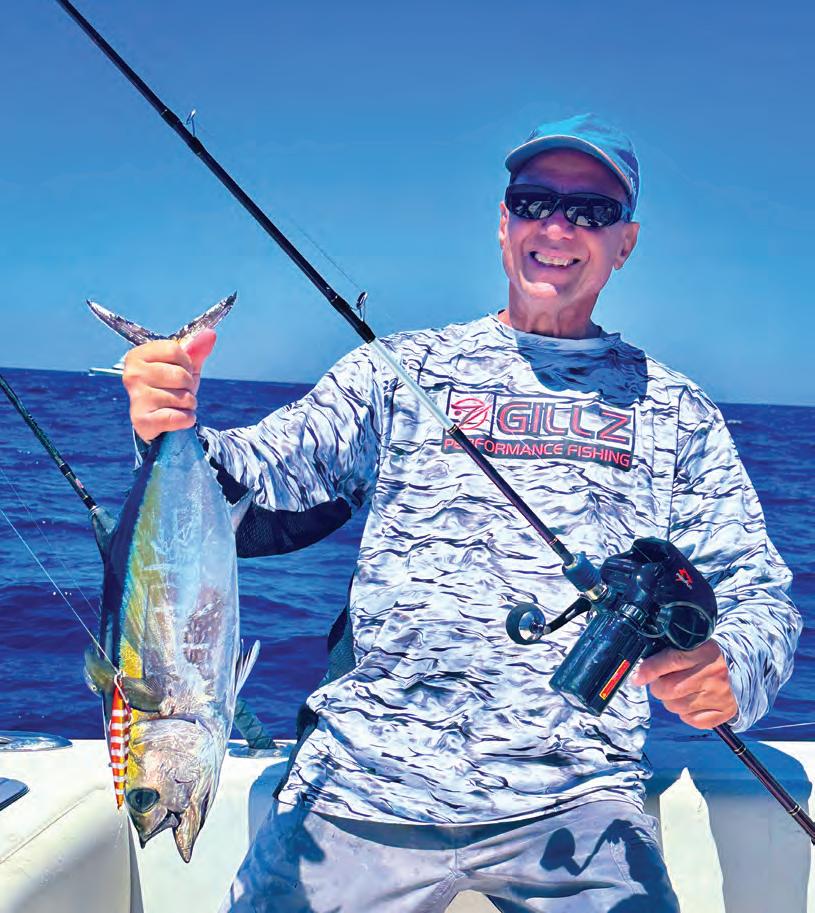

mobility around the boat.
Te Kraken mates perfectly with the Goofsh Monster Deep PE4-7. It’s a 7-foot rod that handles a maximum jig weight of 700g. It can deadlif 44 pounds, and has held up to some signifcant adversaries without being too heavy.
I spool all my reels with FINS braid. I use the 45/6, which has 45-lb. breaking strength and the diameter of 6-lb. monoflament. Tis matches the reel specifcations while adding line capacity. Te thin diameter also cuts through the water with little resistance, which is critical for vertical jigging.
On the business end, I use jigs in the 180-to320g range but can go as heavy as 700g if needed to reach bottom. I use a 50-lb. wind-on leader from Sufx. My go-to jigs are from Williamson, under the Rapala family of lures. Rapala also owns VMC,
so these lures are equipped with high-quality hardware. I use Koika, Kensaki, Vortex, Abyss and Benthos jigs.
With these in your arsenal, you can cover any situation and depth. Make sure to purchase glowin-the-dark options along with high visibility and natural colors. Purchase your favorites in multiple size ranges from light to heavy, and you’re set!

With an electric reel, you can easily alternate jigging retrieves from a slow yo-yo motion, which mimics a wounded baitfsh, to a full-on high-speed assault, which triggers the bite refex. Experiment with diferent techniques and settle on the one that works best on any given day.
Make sure the drag is set like any other star drag reel with the ability to pay out line when a big fsh slams your ofering. Once hooked up, use the electric motor to apply constant pressure. I fnd this is more efective for wearing a fsh down than manually pumping the rod while reeling.
Most of all, experiment with your new rig. It will open a world of new options and make your days much more enjoyable. I alternate between the powered setup and a quality spinning rod setup specifcally for jigging.
I personally have over 400 hours of hardcore jigging on this combination without a single point of failure. Now get one on the water and enjoy your new-found passion!
Mark Ambert, IG @marksgonefshing_™




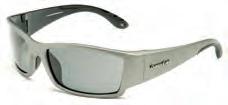






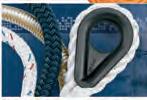




Just in case you missed the frst few runs of blackfn tuna that made it to south Florida, they’re still around, and this month I’d like to share some information and tips about targeting this amazing eating fsh.
Blackfn are very easy to distinguish from other tuna species. Like all tuna species, they are football shaped with smooth scales. Unlike yellowfn, blackfn do not have elongated dorsal or anal fns. Tey have a black stripe running along the top of their back. Most blackfn caught around here weigh between 5 and 10 pounds and measure in the 20- to 30-inch range.
Tese tuna are found from Massachusetts down into Brazil, including the Gulf of Mexico. Within these regions they will almost always be found in schools. Tese schools can be found in a variety of water depths which varies due to current and water conditions as well as the presence of baitfsh. However, they will typically not venture past 200 feet.
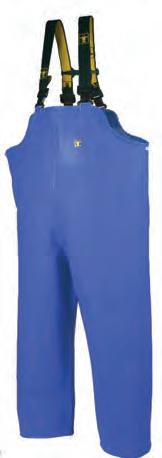
Since blackfns are highly migratory fsh and are constantly moving, they can’t exactly be targeted of reefs and other structures, like some other species. However, they do feed primarily on baitfsh and hunt prey like grunts, threadfns, blue runners or even pinfsh, and many times structure is what consolidates these baitfsh. Tuna schools can ofen be found wherever the bait schools are, and they tend to stick around for a while as they clear out all the baitfsh in an area. Tere are occasions when they will also eat squid or shrimp that foats past them.
Of Florida, blackfns spawn from April to September. When they spawn, the schools of blackfn move farther ofshore and participate in broadcast spawning. Te purpose of moving ofshore is to make sure that the eggs stay adrif in the Gulf Stream and don’t get pushed inshore. However, since the eggs and young tuna spend a majority of their life ofshore, this creates opportunities for predators such as mahi-mahi, skipjack tuna, sailfsh, birds, and of course sharks.
Tere are many ways to target blackfn tuna. I like to drif fsh for them with whatever bait is prevalent and available, whether it’s blue runners, sardines or threadfns. A typical spread for drifing might include two weighted downlines—one for the middle of the water column and one deeper— and a couple of freelines, one on each corner. Kites are another great way to present baits on the surface. With a spread like this, you’ll cover the water column from top to bottom and have a good chance of putting baits in a school of hungry blackfns. If you don’t love live bait, slow-pitch jigging around reefs is also an option. Either way, you never know what else you’ll catch while fshing for tuna.
Remember, fshing is called fshing and not catching for a reason. Try and try again until you succeed! Te IGFA all-tackle world record blackfn tuna weighed 49 lbs., 6-ozs. It was caught of Marathon, Florida back in 2006.
Emily Rose Hanzlik has caught more than 60 IGFA world records in various categories. Find her on
media @emilyhanzlikoutdoors.










Whether considering repowering your trailer boat or your offshore beast, there is a Mastry Suzuki RePower Center that can serve your repower dreams. Mastry Suzuki RePower centers are the best in the business and have the experience, technical know-how and boating passion to make your repower project a remarkable success. With total boat systems capabilities your local Mastry Suzuki RePower Center can address all your upgrade aspirations. Essentially transforming your boat into a totally new boat at one single location.




















ShoreStation hydraulic boat lifts are a reliable choice for coastal residents and boating enthusiasts alike. Their strong construction, made with corrosion-resistant materials, allows them to withstand harsh environmental conditions, including sun, storms, and saltwater damage. ShoreStation provides a steadfast solution for protecting waterfront investments, ofering peace of mind to owners in the Sunshine State.


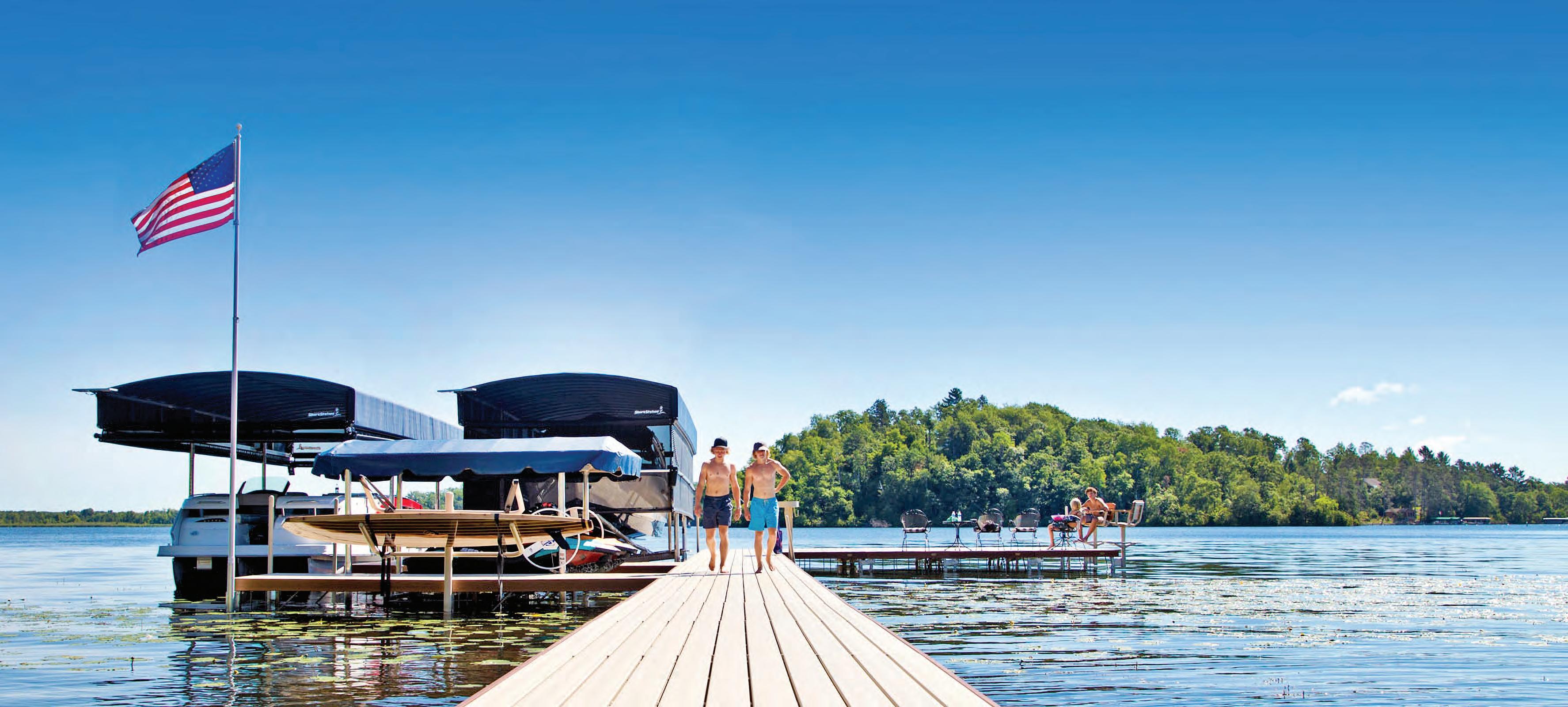
 No Profle Boat Lift
Four Piling Boat Lift
No Profle Boat Lift
Four Piling Boat Lift


Equipped with exceptional weather resistant fabric and breathable SunTex 80 woven mesh ends for maximum protection and durability,

Made from the highest quality materials, our innovative hydraulic boat lift is one of the fastest and safest lifts on the market today. When you have a hydraulic lift, there’s no need to worry about wind and waves getting in your way. This lift will give you confdence to safely land and secure your boat in less-than-ideal conditions.

Never miss another moment on the water. Power your lift with clean, free solar power. Our speedy 20 watt charger features solar regulator drainage protection, saving your battery from permanent damage caused by overcharging.



Every fsherman has a story of the “one that got away.” In my case, the “one that got away” story is of an ongoing battle that became personal.
One fall morning in central eastern Florida, I was fshing under a dock with a Zara Spook. During my retrieve, an explosion broke the water in a way I had never seen in 35 years of fshing. I stood in shock as line peeled of my 4000-size Penn Battle II combo. When the fsh jumped, I saw it was in the mid-40-inch range, and as is frequently the case with big snook, she played with me for a while before bolting into the pilings to break me of. Tis monster would have been my personal-best.
A few weeks passed before I returned to the same dock. Tis time I went armed with a paddletail. Maybe 15 casts in, she bit. I could tell right away it was the same fsh because of the way it fought and because it hit in the exact same location. Speaking of the same, she did the same thing and broke me of in the pilings.
Would you believe me if I told you it happened again? Well, you better, because it happened six more times! Afer the fourth break-of, as I was walking along the shore, I found the Spook I lost the frst time I hooked the fsh.
I told you it became personal. Over the next
four months, I woke up at 4:30 a.m. fve or six days a week to fsh the same spot.
By Brian DapeloI ended up having a total of seven hook-ups and break-ofs with that fsh before I went back to the drawing board.
I geared up to a Penn Battle II 5000 rigged with 30-pound braid and a 50-pound mono leader. I changed lures to a Zman MinnowZ pinned to a ¼-ounce DOA red long-shank jighead. My logic was the long shank would give space between the hook point and the leader, which kept getting frayed by the fsh’s teeth or sliced by the gill plate.
On the morning of Aug. 11, on the third cast of the day at the same spot, my lure just stopped. As I came tight, I saw the head of a snook. As it got closer, it kept getting bigger, and when I gave my rod a hard tug, the fsh didn’t even fght. It swam straight to the shoreline. I knew right away it was THE ONE! I worked quickly to measure and photograph
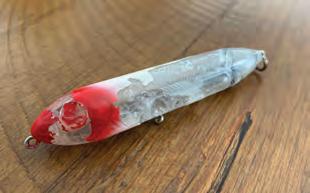

the fsh so I could release it safely. It was 44 inches, without the tail squeezed.
We all have stories of the ones that got away. How many can say they’ve had the same fsh get away seven times, only to land it eight months later in the same spot?
Got a great fshing story? Write it up and send it with a few photos to editorial@coastalanglermagazine.com. We might just share it with the world.



Fish gravitate toward bridges for a multitude of reasons, but primarily for food. The shadow lines of all the bridges throughout Tampa Bay are loaded with baitfish. So, naturally, fish are going to hang around the bridges to feed, but also to stay cool. During major tide cycles, the current flows fast under bridges and this tends to cool the water.
When fishing at the Bay bridges, let the tidal flow do the work for you. If I’m fishing the center span or adjacent to the shoreline, I will spot lock my vessel and cast up-current and let my bait drift through with the tide. If I’m anchored somewhere up-current of the bridge, I will cast my bait parallel to the bridge
 BY: WADE OSBORNE
BY: WADE OSBORNE

and let it sit in the current until I get a bite. When using these methods, it’s important to nose hook your baits, so they make a natural presentation.
The one thing that I always do that most don’t, is chum. Whether it’s with live bait or fresh cut bait, I am always chumming. If you don’t have a cutting board on your boat, go get one. It will make a huge difference in the number of fish that you catch.
Some species of fish you can expect to catch under the bridges are mangrove snapper, spotted seatrout, Spanish mackerel, jack crevalle, ladyfish, cobia, tarpon and black drum, if you’re using crab for bait. If you’re fishing the bridge adjacent to where it meets the shoreline, you can also expect to catch snook.
One tip for landing big fish on light tackle while fishing around bridges is to hook an anchor ball to your anchor line. Cobia and tarpon can be landed on relatively light tackle, if you have the ability to quickly disconnect the anchor to go pursue the fish. Once you work the fish away from the bridge into the open bay, it’s just a matter of time before it’s along the gunwale.
Another plus to fishing around bridges is that they provide shade. People with towers or T-tops on their boats have somewhat limited access, but boats without them have free rein. They’re also a good place to dodge a passing shower and still catch fish while doing so.
Afishionado, “Always an Adventure.”
—Tampa Bay fishing guide Wade Osborne of “Afishionado Guide Services” has been plying the waters of Tampa Bay as a professional full-time captain, since 1997. Osborne offers inshore fishing charters on light tackle spin, fly or plug. He also offers eco-tours with an emphasis on photography. For more info., visit Afishionado.com or find Afishionado Guide Services on Facebook and Instagram.
Email: wade@afishionado.com Call/Text 813-286-3474











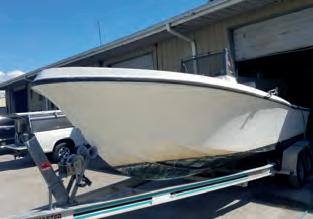
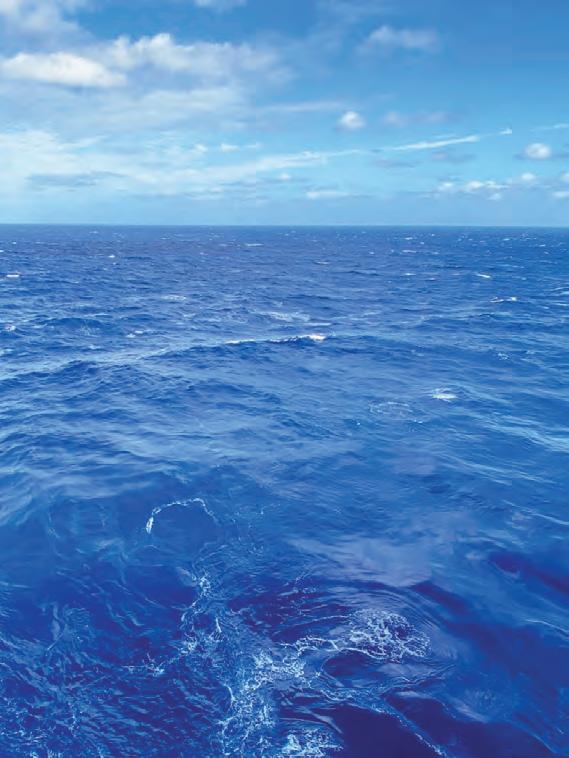

It’s summertime, and that means it’s hot out! It’s hot for us and hot for the fish. Good thing there is an easy answer to the heat-fish at night. The Summer months mean nighttime snapper fishing is at its peak. These tasty mangrove snapper will feed ravenously during the night at the local piers, bridges, passes and Bay rock piles. While these wiley snapper are known for their keen eyesight, at night they let down their guard and feed like crazy.
Top baits include live or cut shrimp, live or cut small pinfish, live or cut small whitebait and other cut baits like bonita or threadfin. Most of the cut baits can be fished on a ¼ ounce jig or, a ¼ ounce knocker rig with a 2/0 circle hook. Fish the live baits on a slider rig with a ¼ ounce slip lead above four feet of 20 to 30-pound fluorocarbon leader. You might get more bites on the 20-pound but might also be kicking yourself when you get broken off by a keeper grouper, cobia or an over slot release snook that hunt the same areas as the snapper. If by chance a goliath grabs your snapper, it doesn’t matter either way.
The best tide is incoming, carrying the cleaner water. That doesn’t mean you can’t catch snapper on the outgoing tide. The bite is strongest around the full moon, but again, any moving tide will produce fish.
While the boating angler has more opportunities at bigger fish, landbased fishermen can catch their limits at most local piers or rock lined bridge approaches. The Skyway area is famous for land-based snapper. The lesser-known Bay rock piles will produce some spectacular fish--many five pound plus fish are caught weekly. Even the public fishing spots will produce a fine dinner’s worth of fish.
Bay snapper tackle and set-ups are the same as for trout, reds or snook. Use 7.5-foot 6 to 12 or 8 to 17-pound class rods, 15 to 20-pound braid on 3000 to 4000 size reels and, 20 to 30-pound fluorocarbon leader. 2/0 to 4/0 hooks and ¼ to 1-ounce leads (Skyway will need the heavier end) and a ¼ ounce bighead.
Snapper are notorious bait stealers. For the first timers, go with cut bait like pinfish or bonita. These baits will stay on the hook longer. Live bait can be king, so always bring as much of a variety as you can.
— What makes our charter service unique is that we cater to disabled veterans and wheel chair bound clients! Our boat is able to accommodate wheelchairs and is ADA compliant. IF YOU’RE A DISABLED VETERAN, YOUR TRIP IS FREE! This is our way of giving back to our veterans.
— Capt. Anthony Corcella, Pocket Change Inshore Fishing Charter 727-432-6446 www.pocketchangefishingcharters.com Check us out on Facebook, Instagram and TikTok



I— Captain Wes Tallyn was raised in Florida and is a fisherman, birder, avid outdoorsman, photographer, and environmental scientist.
Wes has a focus on conservation and education in the community and is the owner of Snook Jam Outdoors. You can find him on Instagram @snookjam or call 727-410-5853.
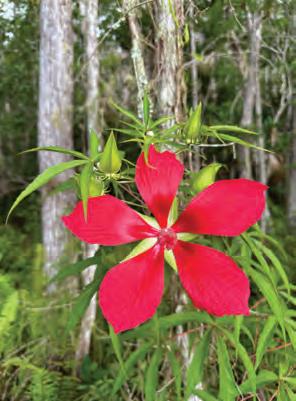
you’re ever in the Naples area, you have to check out Audubon Corkscrew Swamp Sanctuary. The park is about a 40-minute drive from downtown Naples and offers a rare glimpse into a thriving cypress swamp! There’s a 2.25-mile boardwalk that takes you through an amazing swamp that is absolutely teeming with plant life.
Almost every inch of dry ground and tree surface is covered with air plants, orchids or buttressed tree trunks. This is a very good place to see some plants you will otherwise rarely see in parks like Pond Apple, Swamp Hibiscus and even the super rare Ghost Orchid when it’s in bloom!
The place is full of wildlife, but you have to work slowly to pick them out of the lush vegetation. Snakes and lizards can be viewed crossing below and several bird species nest above, including Swallow-tailed Kites. Park goers often see American Alligators, Florida Black Bears and River Otters; and, there have even been sightings of the elusive Florida Panther in the park.

The park suggests that you buy tickets online before going, and you should check their website for hours of operation. Stop in and check it out for yourself, because it is truly a memorable experience!


 BY: CAPT. SERGIO ATANES
BY: CAPT. SERGIO ATANES

The next question is where do we go from here? The Tampa Bay area has plenty of fishing piers both inside Tampa Bay and on the Gulf of Mexico. We are also blessed with miles of shoreline. Pier fishing could be your best source of information on what is biting and how to rig them. Look for the anglers with wagons or small shopping carts converted to carry rods and tackle. These guys are what I call pier pros, and they know their stuff. Fishermen are good-natured and most are always willing to extend a helping hand to get someone else started. Another source for action is along the miles of shoreline and beaches. Wade fishing can be both fun and refreshing during the summer months. Add a picnic lunch, and you are ready for action.
— Capt. Sergio Atanes is host of Florida West Coast Fishing Report on Facebook and YouTube. He also hosts Fishing Adventures Florida TV show airing on YouTube, Waypoint TV, Carbon TV, Outdoor Action, and Angling TV. Owner of Reelfishy.com Charter business covering the west coast of Florida with over 135 captains on staff. For information contact Capt. Sergio at (813) 973-7132 email: atanes@msn.com.











8
5
2

20
24
26





9

21
22 Mon 2:54 2.6 1:35 3.5 8:08 1.5 9:08 -0.3 6:47 8:28
23
24
25
26 Fri 5:06 2.9 5:24 2.8 11:35 0.7 11:48 0.8 6:49 8:25
27
28 Sun 6:20 3.1 7:55 2.3 12:29 1.2

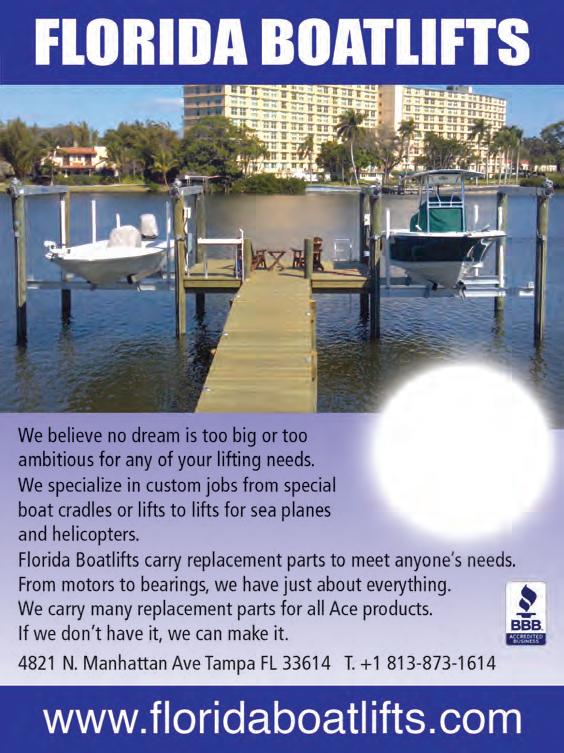


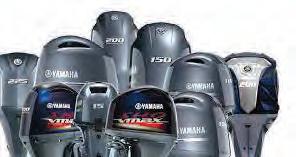



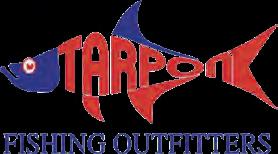

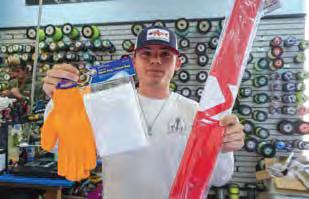

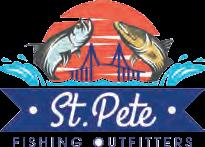











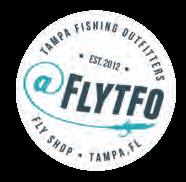








 BY: CAPT. GEORGE HASTICK
BY: CAPT. GEORGE HASTICK


Spanish mackerel will still be inside Tampa Bay and along the beaches in July. When the summertime flats get too hot, it can be a good time to target Spanish mackerel in deeper water, that will be cooler than the flats, and you might catch a little more of a breeze to keep cool yourself. Some of the things that can be great about mackerel fishing is that, once you find them, they are usually schooled up, so the bite can be as fast as you get a bait or lure out.
Finding them can be as easy as looking for birds diving on bait schools, seeing mackerel crashing baits on the top of the water or seeing mackerel coming out of the water as they attack baits. If you are not seeing this, or having any luck working the bait schools, they are also structure oriented. Range & channel markers, reefs, bridges and drop offs where flats stop and drop down to eight feet or deeper are all good areas to fish. You can throw spoons or jigs while fan casting to see if there are any in the area or, if you have live scaled sardines, start spraying some live baits out and look for topwater explosions! Many times, you can set up, up-tide of the structure and put out a chum bag, which will attract bait fish and mackerel behind your boat. You can also cut up pieces of scaled sardines or threadfin and put a steady stream of pieces in the water and, then, free line a live bait or chunk in with the chum that is drifting with the current. A 3/4-ounce spoon is also a great mackerel catcher, but you might want to put about six inches of 30 to 40-pound wire with a swivel to tie your line to. This will lessen the number of cut-offs you will get from their sharp teeth. For live baiting, I use 25to 30-pound leader with a 3X long shank hook for the same reason. So, get out there and have some drag screaming fun!
— Capt. George Hastick of “Fish Hunter Fishing Charters” in St. Petersburg, Fl. is the co-host of Florida West Coast Fishing Report and co-hosts Fishing Adventures Florida which is on five streaming channels and You Tube. He has been fishing the waters of the Tampa Bay area for over 40 years and guiding over 20 years.



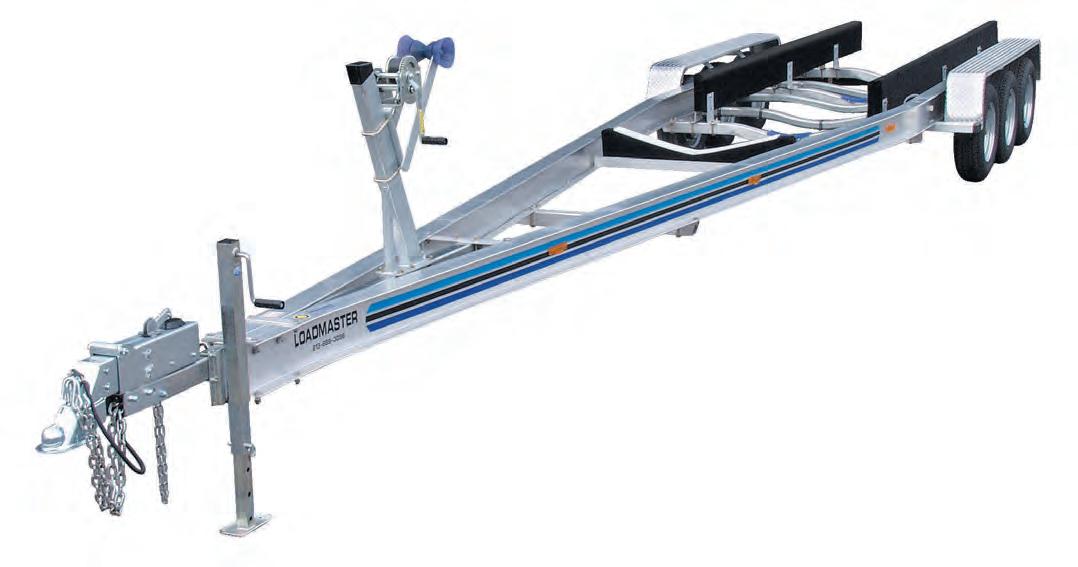




When conservation works, it often comes with both wins and losses, especially in the realm of recreational fishing. Take the case of gag grouper in the Gulf of Mexico. For years, anglers enjoyed fruitful trips the majority of times and gag grouper were their target species. However, in 2023, the National Marine Fisheries Service (NMFS) implemented stringent measures significantly curtailing the fishing season and even ordering an emergency closure midway through. The change left many frustrated, but the decision remained unchanged.
As anticipation builds for the 2024 season, anglers brace themselves for the possibility of an even shorter window. The frustration is palpable, particularly among those who witness firsthand the robust gag grouper population thriving off the West Central coast of Florida. Despite the regulatory hurdles, these waters boast healthy and sizable gags—a testament to successful conservation efforts?
The debate rages on whether the stringent measures have led to an abundance of catch-and-release scenarios, or if the population indeed flourishes untouched beneath the waves. Regardless, one thing remains certain: the gag grouper population in this region shows no signs of decline. If and when the season opens, anglers can expect an exceptional haul with the average size of keepers possibly reaching
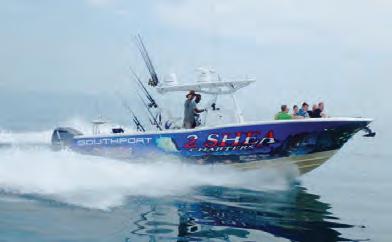


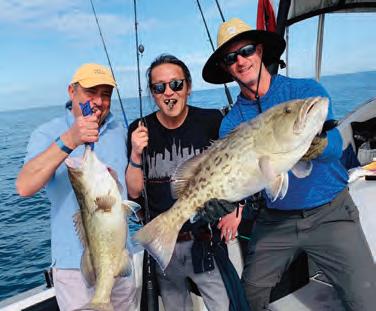

unprecedented levels.
While the restrictions may test the patience of enthusiasts, many recognize the importance of safeguarding these resources for future generations of anglers. Conservation is not just a buzzword; it’s a commitment to preserving the delicate balance of marine ecosystems. However, it’s also acknowledged that conservation efforts shouldn’t hinder the enjoyment of the fruits of the sea, especially when it comes to dinnertime delights.
The tale of gag grouper in the Gulf highlights the complexity of balancing conservation with the interests of recreational fishing. It serves as a reminder that effective management requires a practical understanding of local ecosystems and a willingness to adapt species closures based on evolving data. As debates about fishing regulations continue, one thing remains clear: the health of our oceans depends on the collaborative efforts of policymakers, scientists and passionate anglers alike. Only through such collective action can we ensure a fishing future for all.
— Capt. TJ Shea. Owner/Operator 2 Shea Fishing and Diving Charters. TJ has been exploring above and below the Gulf of Mexico since he was 8 years old. Contact us at 813-385-2169 and at info@fishanddivetampa.com




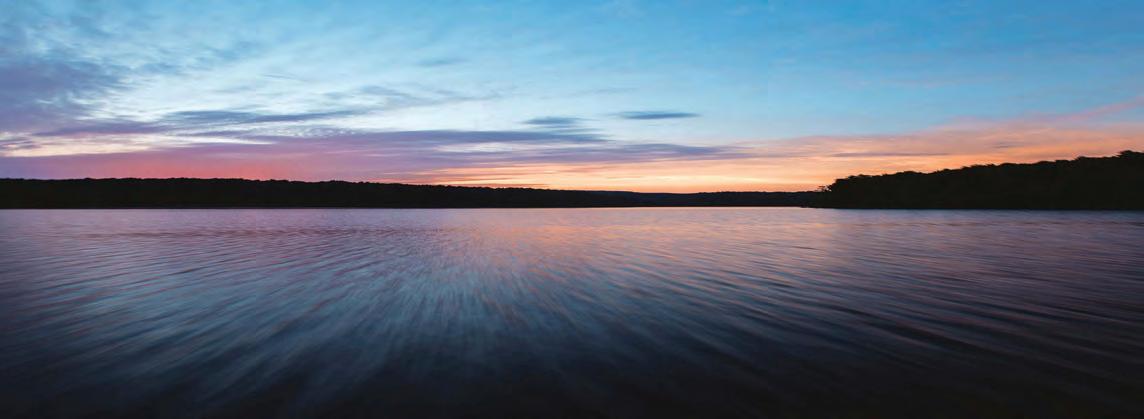




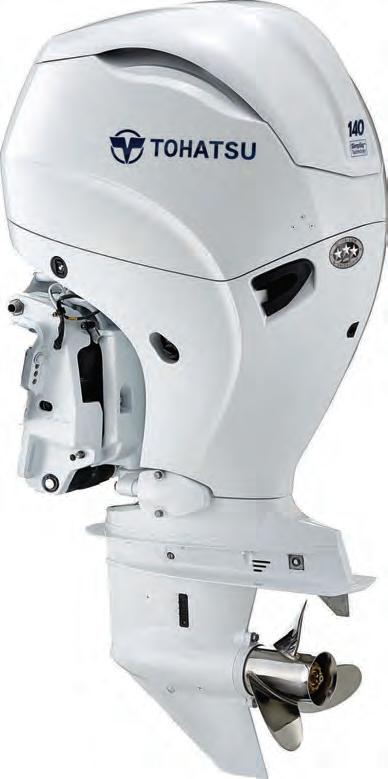
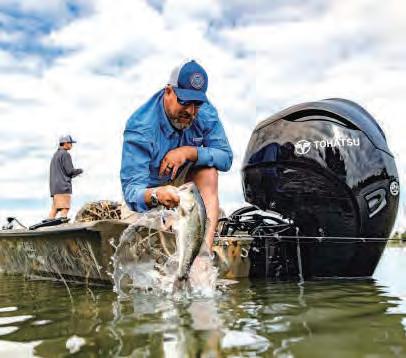

 By: Joshua Broer
By: Joshua Broer
hen we think about tarpon fishing, we usually picture a boat near a beach, pass or bridge. The livewell is filled with threadfin herring or pass crabs--both go-to live baits. The image of a giant silver fish launching into the air, then tearing a huge hole in the water comes to mind. The exhilarating jumps and exhausting fights can last for an hour or more. These iconic images drive tarpon fishermen to great lengths to fuel their passion for the mighty silver king. But, there’s another way to get in on the action that doesn’t require a boat, getting up at first light or dealing with boat ramp chaos.
Megalops Atlanticus is the scientific name for Tarpon, though we often call them silver kings and poons. Fishing for tarpon on foot is not a new game, just a pursuit that is not as sexy or popular as fishing from a boat. If you flip through a magazine or scroll through Facebook or Instagram, you’ll certainly see more pics of large fish alongside the boat and an angler posing with a hero grin. This is still the mountaintop when it comes to landing a monster tarpon migrating down the beach. However, this method often takes a considerable amount of time, money and patience.
For those of you familiar with land-based tarpon fishing, this may be nothing new. But for those of you not familiar with this other silver king game, it’s a great alternative that will still bring the excitement that comes with being on the open water. In much of Florida, on both coasts, we have endless brackish water rivers, spillways and bayous that hold tarpon--sometimes year-round. Many of these haunts are rain dependent. The big summer storms that push water into these backcountry areas are often the key to bringing this unique fishery alive.
June through September, when our familiar late afternoon thunderstorms pound the Tampa Bay area, these land-based spots fire up. You’ll often find a variety of tarpon here. Some of these fish are full grown monsters looking for an easy meal of baitfish stirred up in the storms. Most of these fish, however, are micro to juvenile size who are also looking for an easy meal. Many are resident fish who enjoy these spots free of open-water predators. These places make a great habitat for tarpon to thrive and grow before heading out to sea.


When the big summer rains hit, I’ll throw two or three light to medium spinning combos in my truck and hit the road. A good setup is a seven-to-eightfoot spinning rod matched with a 3000 or 4000 size reel. Leaders are typically 30-pound test, but some structure heavy areas require beefing up to 50-pound test or more. Many of these backwater spots are loaded with rocks, hanging branches and other unseen snags. Pair that with the tarpon’s rough sandpaper mouth and it’s enough to destroy the toughest of rigs. Almost any soft plastic swim bait on a 1/8 to 1/2-ounce jig head will do the trick. Some folks use hard-body lures which can be effective, but those treble hooks can be trouble for both you and the fish.
When picking a spot, you only need a saltwater presence and moving water. Rivers and spillways are two of the most popular places. Look for bait. Tarpon are drawn here, because the bait is thick--a never-ending buffet line. If you pull up to a spot, be respectful of anglers already there. Just like the boat scene, it’s important to practice good etiquette on foot. If someone is there before you, it’s often best to just move on to another location. With that in mind, get ready for the big summer storms, and a fast and furious bite that might change the way you think about tarpon fishing.
— Joshua Broer, a Tarpon Springs native, is the Facility Manager for the College of Arts & Sciences at USF. His specialties include flats and bass fishing, fly fishing, and sea kayaking. Reach him at joshua.broer@gmail.com.






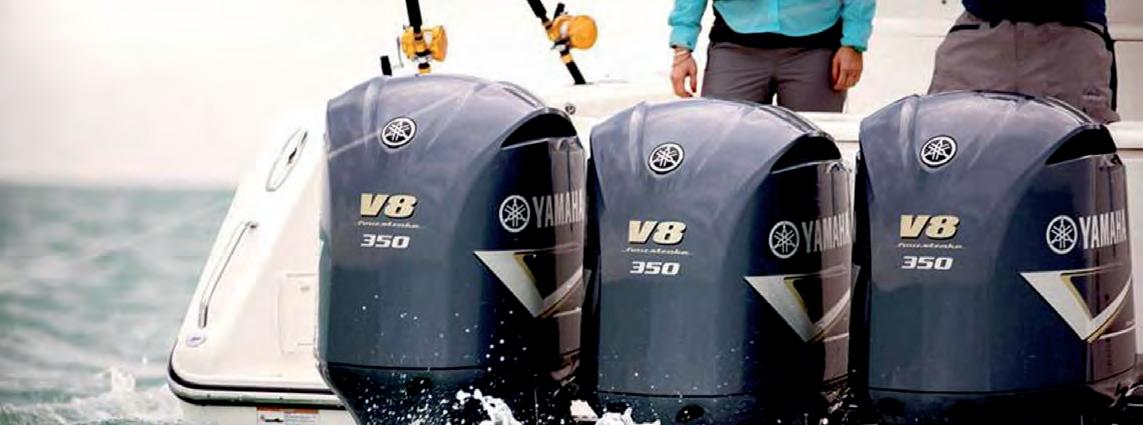























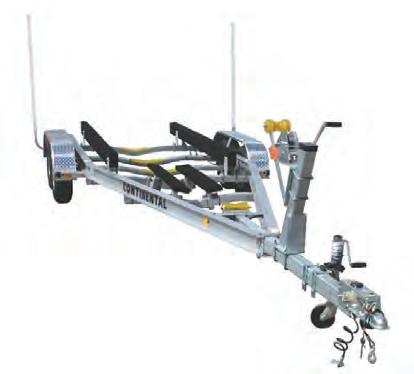






Fishing in the Everglades is always a blast, and sight-casting tripletails is one of the coolest challenges out there.
Tese fsh are unique with their three-tail look and tendency to hang out near foating debris. If you want to catch them, using live shrimp and spotting them is a great way to do it. Idle around and look for foating seaweed, as tripletails like to hang around that to camoufage.
Use polarized sunglasses to cut the glare and make it easier to spot them. Move slowly through these areas, keeping your eyes peeled, but fair warning— it’s not as easy as it sounds.
Once you see a tripletail, don’t rush in. Tey can be skittish, and sudden




moves or loud noises can scare them of. Drif toward them with the wind or current to avoid using your engine.
Tripletails love live shrimp, so get the liveliest, healthiest shrimp you can fnd. Hook them through the tail or behind the horn on their head so they stay active and attractive. Cast your shrimp past the tripletail and slowly bring it back toward them. Let the current make it look natural.
If the fsh is near the surface, just freeline it. If they’re deeper or the current is strong, add a little weight to keep the shrimp down. Sometimes it takes a while to fnd and approach tripletails, so don’t rush it.
Use light to medium tackle, 15- to 20-pound good since tripletails have sharp gill plates. Early morning or late a is usually best, since tripletails are more active and easier to spot then. should be around for the next couple of months of the summer.
Catching tripletail is truly a fun challenge that mixes the thrill of the hunt with the excitement of the catch. Whether you’re a fshing pro or just starting, targeting tripletails in the Everglades is an adventure you won’t forget.
If you are interested on getting on some Tripletail, book a charter with Bean Sportfshing, www.beansport








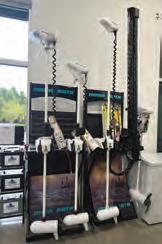














During the 2023-2024 bonefsh spawning season, researchers with the Bonefsh & Tarpon Trust documented, for the frst time, bonefsh prespawning aggregation sites in Florida. Te frst was discovered in the Upper Florida Keys and the second is a suspected site found near Key West. Tese discoveries are a hopeful sign of continued recovery for the species afer a decades-long decline.
“Finding these nearshore areas where bonefsh school by the thousands before migrating ofshore to spawn in deep water is essential for their conservation,” said Jim McDufe, BTT President and CE0. “As our science team continues to identify these sites, we will work with our state and federal partners to ensure that they are protected, ensuring a healthy future for one of Florida’s most iconic fsh species.”
Over the course of the 2023-2024 bonefsh spawning season, which spans from October to April, BTT Florida Keys Initiative Director Dr. Ross Boucek and his team tagged 44 bonefsh with acoustic transmitters with the help of Florida Keys fshing guides. BTT scientists also deployed 37 acoustic receivers on the reef tract, which allow them to monitor bonefsh spawning movements.
“We documented seven spawning events during the 2023-2024 spawning season,” said Dr. Boucek. “Four bonefsh tagged with archival depth measuring tags spawned during these events; three of the four fsh recorded maximum depths of 332 feet, 310 feet, 302 feet. Te fourth fsh recorded a maximum depth of 180 feet on its frst possible spawning or false spawning attempt. Te recorded spawning depth of approximately 300 feet is consistent between the Upper Key spawning site and the suspected spawning site near Key West, and with recorded spawning events in Te Bahamas.”
During full and new moon cycles from fall through early spring, bonefsh


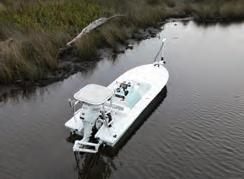




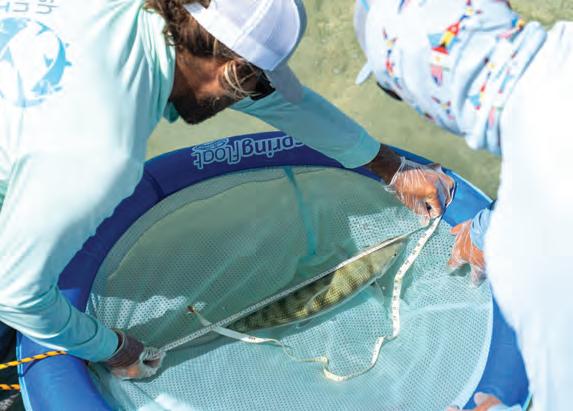
migrate 70 miles or more from their home ranges to nearshore pre-spawning aggregation sites, where they prepare to spawn by gulping air to fll their swim bladders. At night, they swim ofshore and dive hundreds of feet before surging back up to the surface. It is believed the sudden change in pressure as they ascend makes their swim bladders expand, causing them to release their eggs and sperm. Afer fertilization takes place, the eggs hatch in about 24 hours, and the larvae drif in ocean currents for between 41 and 71 days before settling in shallow sand- or mud-bottom bays, where they develop into juvenile bonefsh.
“Our long-term goals are to conserve the reproductive cycle of our growing bonefsh in the Florida Keys,” said Dr. Boucek. “We still need to know where spawning occurs across the Keys, what threats like habitat loss those spawning fsh might face, where their larvae go, and the habitats the juveniles need to ensure that our new population of bonefsh can reach their full potential.”
For more information, go to bonefshtarpontrust.org.

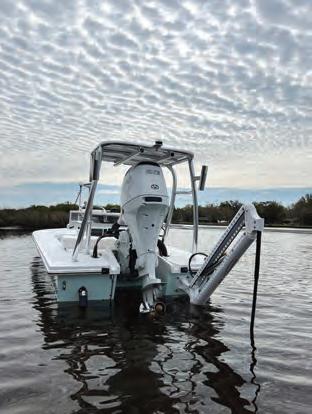















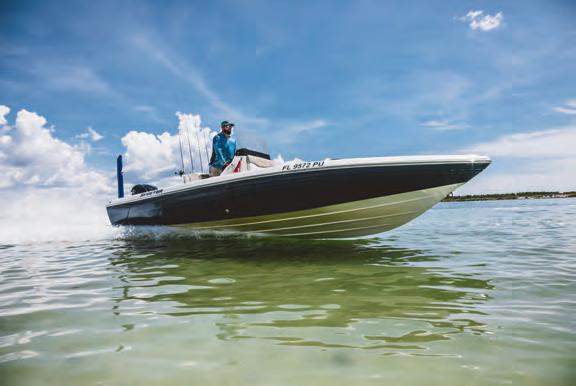





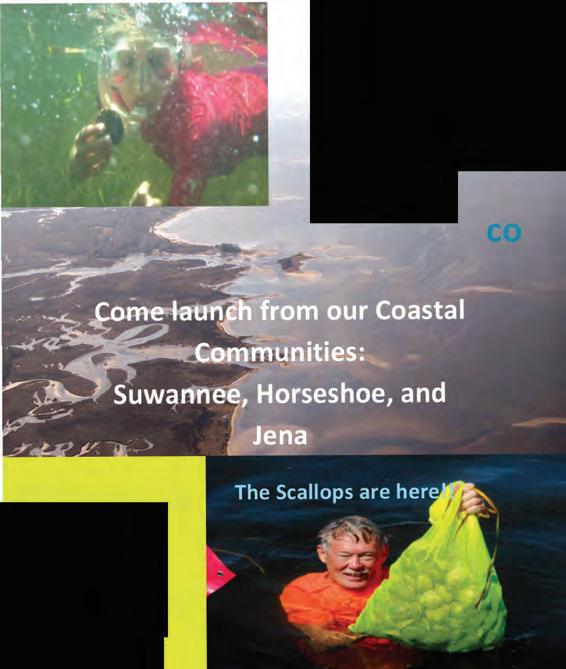
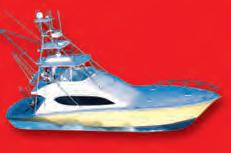











Regulations change and so do reporting and license requirements. Here are some things FWC wants you to remember before you head out on the water.
1. Get a License and Reef Fish Angler Designation
In addition to a fshing license, you’ll need a State Reef Fish Angler designation if you plan to target any of the following reef species: mutton snapper, yellowtail snapper, hogfsh, red snapper, vermillion snapper, gag grouper, red grouper, black grouper, greater amberjack, lesser amberjack, banded rudderfsh, almaco jack and gray triggerfsh.
Te State Reef Fish Angler designation is free and required for all anglers fshing from private recreational vessels for reef fsh. Tis includes anglers who are exempt from a regular fshing license. Tis free-of-charge designation is used to help fsheries managers improve recreational data of reef fsh, which helps improve the management of our fsheries.
Get your license and State Reef Fish Angler designation online at GoOutdoorsFlorida.com, in person at a license agent or tax collector’s ofce or by calling toll-free 888-FISH-FLORIDA (888-347-4356).
2. Know the Regulations
Know the regulations for the species you are targeting, as well as those you might catch incidentally, before you drop a line. When you reel in a fsh, you will know whether or not you can throw it in the fsh box.
Tere are also specifc reef fsh gear rules, such as using non-stainless steel circle hooks, a dehooking device and a descending device or venting tool. Check regulations in the area you plan to fshing by visiting MyFWC. com/ReefFishGear.
3. Have the Correct Release Gear
Quick and proper use of a descending device or venting tool can help fsh get back down to depth and improve their chance of survival. Such a tool must be onboard when you are targeting reef fsh, and you should know how to properly use it to alleviate barotrauma in fsh hauled from the depths.
Venting tools are sharpened, hollow instruments designed to release expanded gases in the swim bladder of fsh experiencing barotrauma. Knives, ice picks and hooks are not legal venting tools and ofen cause more harm to the fsh than good.
To learn more about barotrauma and how to use descending devices or venting tools, visit MyFWC.com/Barotrauma or check out ReturnEmRight.org/ BestPractices, where you could be eligible to receive free descending device gear.




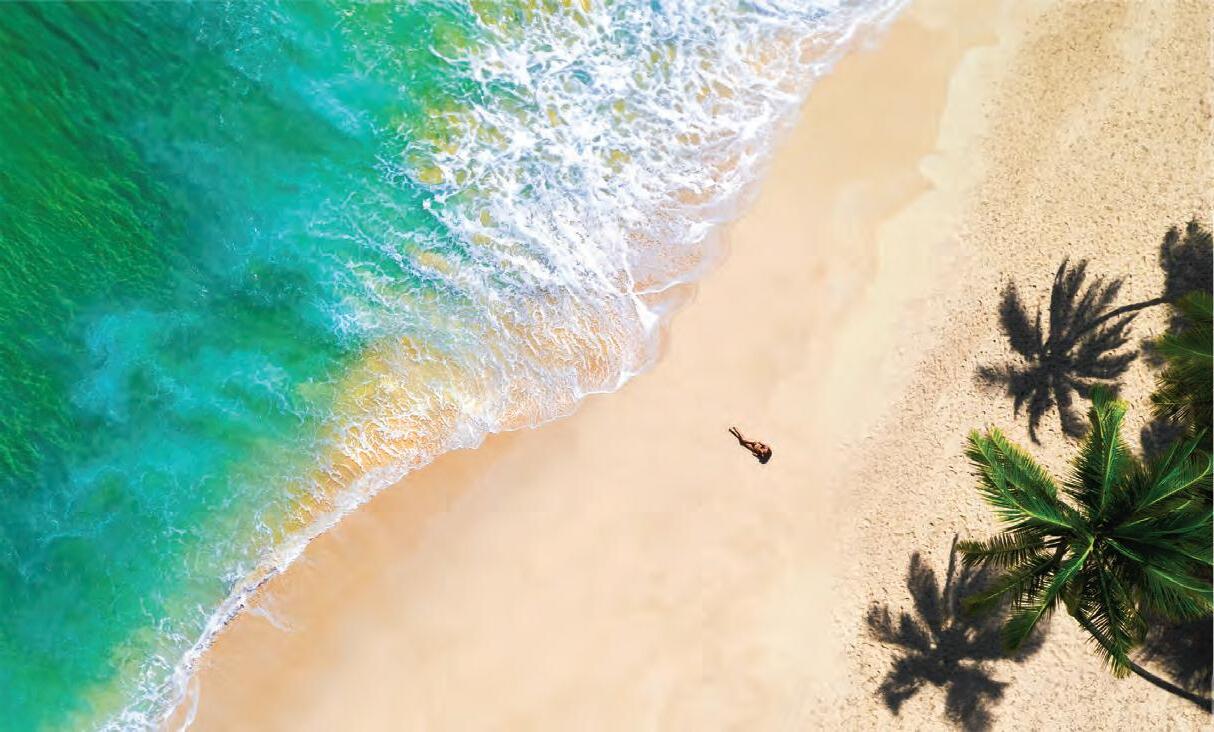
For the past two years, I’ve had the pleasure of taking Coastal Conservation Association’s Leiza Fitzgerald out on the water to assist in tagging dolphinfsh for the CCA STAR competition. As if going fshing wasn’t enough of a prize, recreational anglers can sign up for this competition, with a donation to a good cause, and participate in this fshing side quest for all sorts of epic prizes.
Tagging trips with Leiza are some of my favorite mahi trips. She is more excited about catching throw-backs than anything we put in the box. Each undersized mahi, and most of the keepers, are handled with care and released with some fancy new jewelry.
With her tagging gun locked and loaded and a towel to lay over the fsh’s eyes to calm them, Leiza carefully and quickly turns peanuts into prizes, and sends them on their way.
CCA Florida STAR presented by Yamaha is a summer-long event that invites anglers and non-anglers to participate and win prizes valued at almost $500,000, including boats, motors, scholarships and more. Te competition is currently live, and registration is open until Sept. 2.
“In the past nine years, it’s been amazing to see STAR participants support conservation and embrace the catch-photo format,” Fitzgerald
said. “Awarding nearly $4 million in prizes, with $900,000 specifcally awarded in youth scholarships to the thousands of statewide STAR registrants is exciting, but even more exciting is the awareness STAR has created for the conservation of our marine fsheries.”
Te 2024 STAR competition is comprised of eight divisions targeting inshore and ofshore species along with trash cleanup. Wherever your home waters are, there is a way to get involved.
Te most notable of the STAR competitions is for tagged redfsh. Te best opportunity to catch this year’s tagged redfsh will be in Citrus and Charlotte counties, STAR’s 2024 Destination Counties, which each have eight tagged redfsh in their coastal waters.

Six years ago, STAR initiated a tagged fsh division for ofshore anglers, the Tigress Outriggers and Gear Tagged Dolphin Division. Tis division ofers one winner a $10,000 cash prize or scholarship. Te frst STAR registrant who catches a STAR tagged dolphin wins.

Te tagged dolphinfsh were caught and released of the Florida Keys. Tese fsh will migrate up the east and west coasts, providing anglers a shot at recapturing one. Tere have only been two tagged dolphin recaptured in six years, and neither angler was registered in the competition. You have to be in it to win it!
Make sure to report any tagged fsh you catch, whether you are registered or not. Take photos, measurements, tag numbers and information, and note the location of recapture. You do not need to remove the tag if you are releasing the fsh.
Fish are very mysterious, and there is so much we don’t know about them. Te more data we collect, the better conservation we can provide.
Capt. Quinlyn Haddon; Sweet E’nuf Charters, Marathon, Florida Keys; @captainquinlyn; captainquinlyn.com; (504) 920-6342.
- $80 Entry (includes one year CCA membership)
- $40 Entry for current CCA members
- FREE for Youth
- Over 100 Days of Fishing
- $500,000 in Prizes & Scholarships
- Memorial Day Weekend to Labor Day








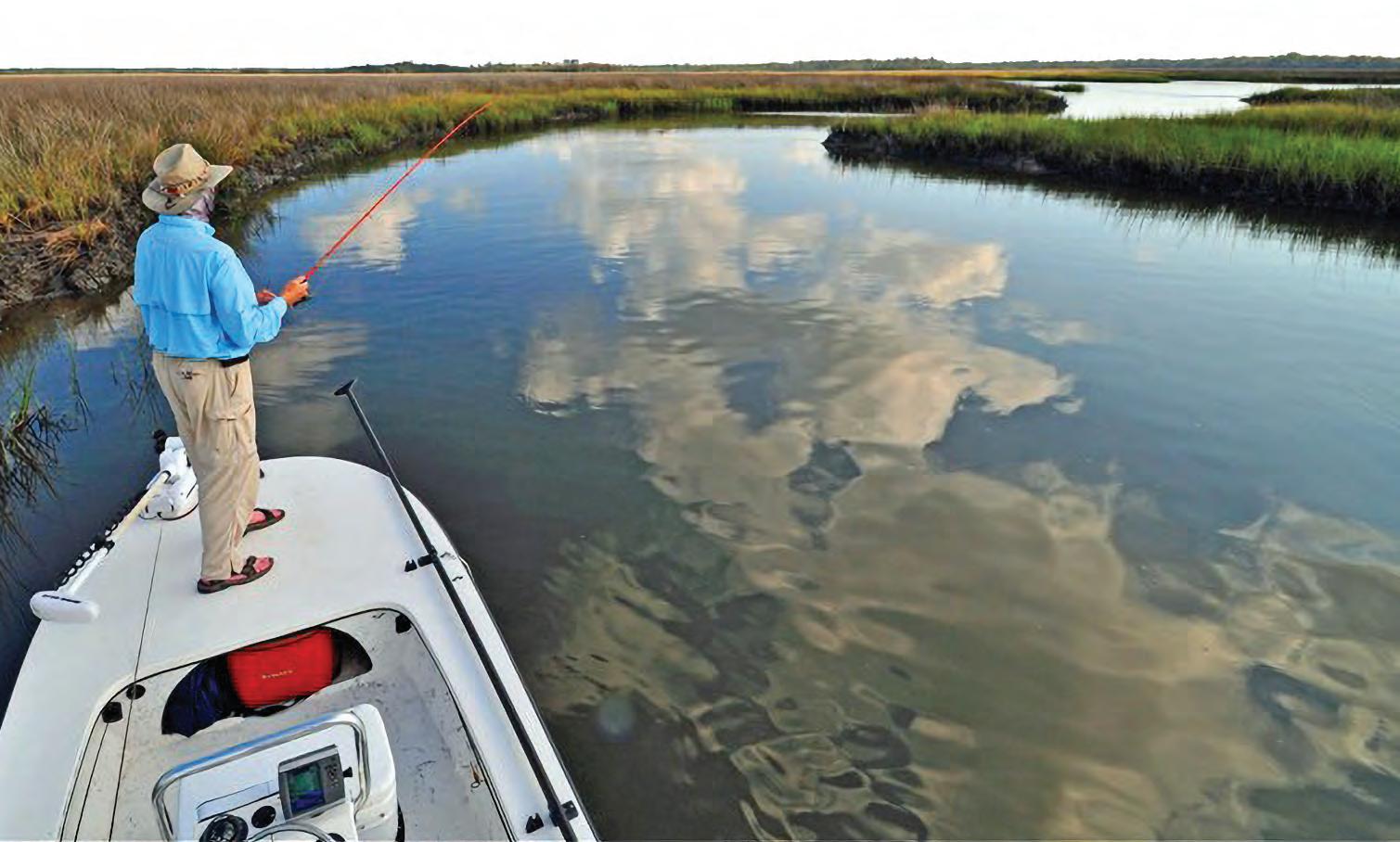
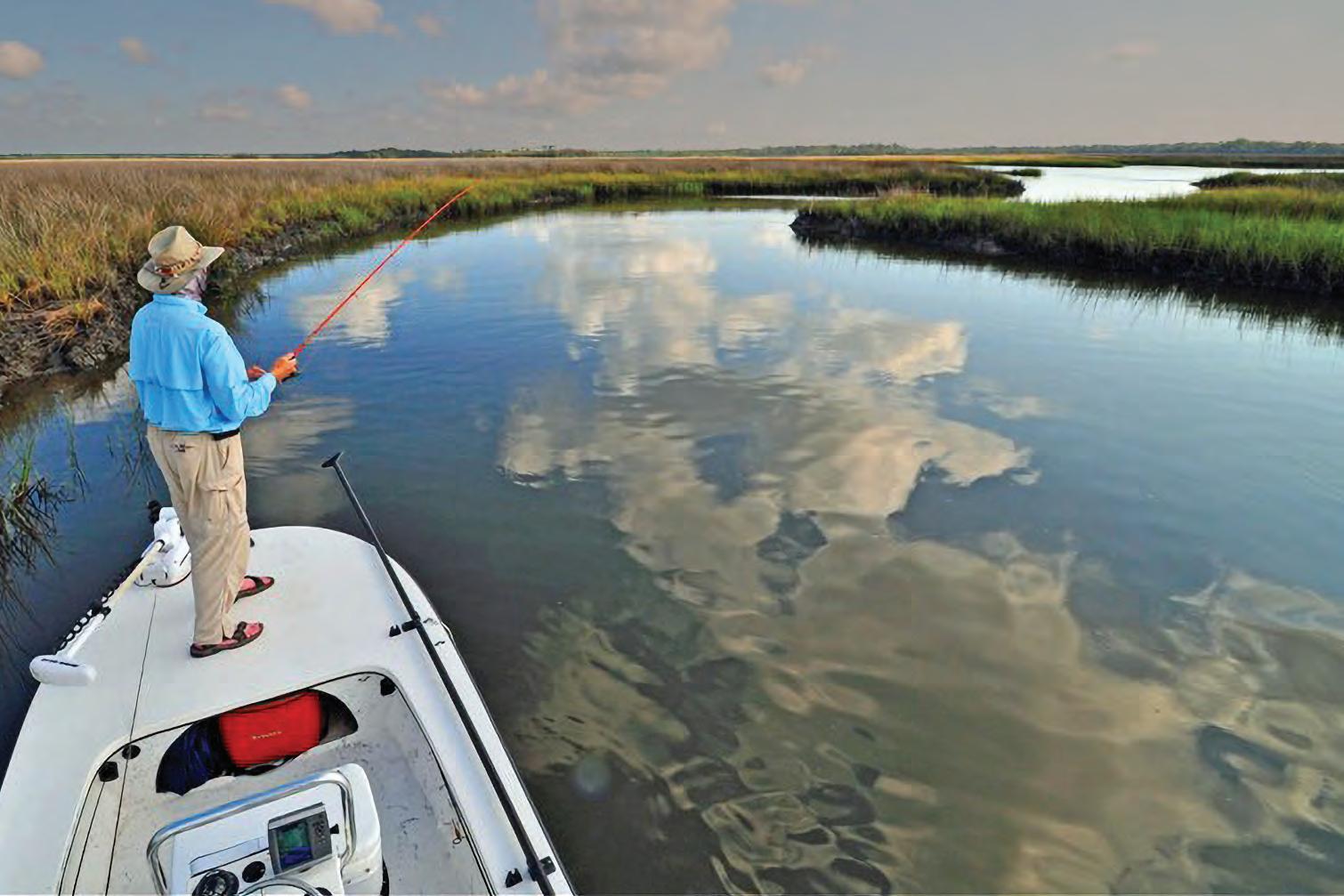
Fishing during the hot stale days of summer is ofen thought to be the toughest and slowest fshing there is. I am here to help with that.
Not only are the next few months an amazing time to catch fsh, they can also be the easiest time to pin-point patterns for big bass. Spawning bluegills are the key. Bass will set up around bluegill beds and feed heavily on an easy meal of bluegills that congregate in the shallows to spawn.
Whether you are an experienced tournament fsherman or someone who just gets out every once in a while to stretch a line, this pattern is easily found if you know what to look and listen for.
You heard me right, listen! Tere are many ways to locate bluegill beds, and my favorite way is to use my ears. When you get around bluegills feeding in grass or lily pads, you will hear distinct little popping sounds of small fsh sucking prey from the surface. When you hear this, you know you are in a productive area, and the big bass should be close by.
Another way to locate these areas is to use your eyes in shallow water. Bluegill fan

out an area on the bottom just like a bass when they spawn, but they do it in big groups and create a pattern on sand and hard bottom that looks like the surface of the moon.
If the water is even a little clear, you should be able to spot a bunch of odd craters and divots on the bottom even from a distance. Tis is typically in very shallow water, and bass use this shallow water to their advantage. Spawning bream make easy pickings.
If all else fails, or in murky water, I fnd these beds with my electronics. I idle around with side scan in 2 to 5 feet of water to locate crater patterns on my units and mark them with waypoints to come back and fsh later. Tis is a good way to locate beds that are less pressured, because they are harder for other anglers to fnd.
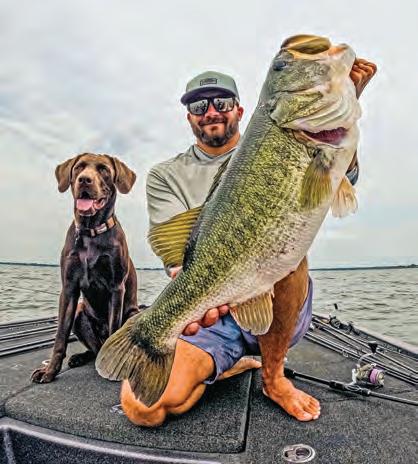
Tere are a few diferent baits I use to catch bass around these beds. Te most important thing is to stay as far away from these areas as you can, while still being able to get a cast into them. Be stealthy because shallow-water bass are skittish.
I like a bluegill-colored popping frog and also a bluegill-colored swim jig with a trailer to match. I’ll also throw a weightless wacky-rigged Senko and will put a little nail weight in the Senko when fshing deeper beds. A lightweight Carolina-rigged Trick Worm or a shallow-diving squarebill crankbait are two other good options. Hopefully this summertime bass tip helps you have a fun and productive day on your waters!
Tyler Woolcott is a professional tournament angler and guide. Check out his website at www.tylerwoolcottfshing.com.

When we inshore anglers gather around the dock, you can count on one or more of these being the topic of conversation: trout, redfsh, founder or snook. Seldom is it the sheepshead. Although they are not a species frequently targeted with lures, they can provide an aggressive bite and a worthy fght. Keeping them out of the structure they love is the real challenge.
 By Capt. Michael Okruhlik
By Capt. Michael Okruhlik
depending on the current, were all it took to place his shrimp in the strike zone. Te strike zone is typically as close to the structure as possible. If you notice the sheepshead swimming around, they always have their noses to the structure.
Te sheepshead is a fsh that my son had never caught until a few weeks ago. We took a trip to South Texas to view our second of four Starship launches at the SpaceX facility. Afer the excitement and rumble of the launch, we picked up some live shrimp, and he was soon rumbling with many sheepshead.
We set our sights on the Queen Isabella Memorial Causeway, as it has a nearly unlimited amount of structure ideal for attracting sheepshead. Using the anchor mode on our trolling motor made it easy to stay close to the bridge pilings where the sheepshead were congregated. My son especially liked targeting them because we were under the causeway and in the shade, as opposed to being out on the open fats where we typically fsh.
A small sharp hook and a split-shot or two,
I fnd that keeping your bait small helps attract the bite. It is benefcial to keep a tight line, as the bites can be very light. One tactic that served my son well was to walk toward the back of the boat and away from the structure once a fsh was hooked. Tis assisted in pulling it away from the structure. Trying to manhandle the fsh out on light tackle would certainly have led to some break-ofs.
Stay vigilant in checking your line for frays afer several casts and defnitely afer each fsh. Keeping a sharp hook will also help in landing more fsh because of their boney, teeth-flled mouths. Tis turned out to be an extra memorable fshing trip. We witnessed another historic space launch, and his catch landed him in second place for the Texas CCA Star Tournament with his sheepshead.
Tis is why I always say, take a kid fshing! Tey might win a college scholarship.
Capt. Michael Okruhlik is the inventor of Knockin Tail Lures®, and the owner of www.MyCoastOutdoors.com.

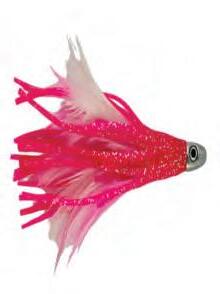
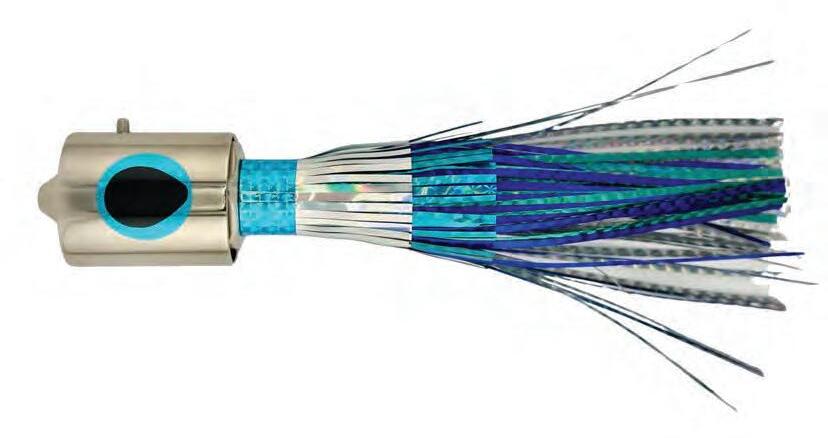


Amonster blackfn tuna caught during Te Miami Dolphins Fins Weekend tournament is an unofcial world record. Te 50.1-pound blackfn was certifed by an IGFA biologist, and it outweighs the existing IGFA all-tackle world record by a little less than three-quarters of a pound.
Angler Robert (Bob) Kowalski landed the huge blackfn aboard the 34’ Express Sportfsher Miss Britt, which was captained by Gareth Haddam and chartered by Pete Sinnick and his family. In addition to being a potential new world record, the fsh won the largest tuna division at the tournament and earned the team a $30,000 payout.

Te existing IGFA all-tackle world record blackfn tuna weighed 49 pounds, 6 ounces. It was caught in 2006 of Marathon, Florida Keys by Capt. Mathew Pullen. Fins Weekend is an annual fundraiser hosted by the Miami Dolphins. It is a two-day tournament with proceeds going to support the Baptist Health Orthopedic Institute Youth Athletic Outreach Program. For more information, go to bluewatermovements.com.















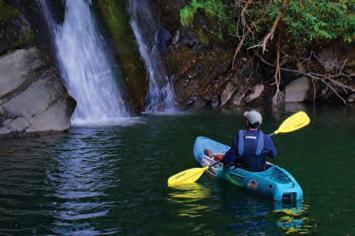

When it comes to growing giant largemouth bass, Texas has fgured some things out. Since 1986, the state’s Toyota ShareLunker program has conducted a breeding program using huge largemouths caught and donated alive by anglers. Tese donated bass, called Legacy Class, must be heavier than 13 pounds. Tey spawn in a facility before being released, along
with their ofspring, to spread big-fsh genetics across the state.
Te results of the program are apparent in the giant Texas bass caught each year. Many of them go right back into the breeding program, and the spring of 2024 was the fourth ShareLunker season in a row that the program has deemed exceptional.
Tis spring, anglers contributed 19 Legacy Class, 13-plus-pound bass from seven diferent Texas lakes. O.H. Ivie in west Texas is the best big-bass fshery in the country right now. It produced 12 bass heavier than 13 pounds this season, continuing a hot streak that goes back to the 2021.
Highlights from the 2024 Toyota ShareLunker collection season:
• Angler Kyle Hall’s 15.82-pounder was the 37th heaviest all-time Texas largemouth bass.
• Angler Kyle Hall has recorded a Legacy Lunker in three consecutive seasons.
• Six out-of-state anglers etched their name into the program’s record book. Te anglers hailed from Kansas, New York, Ohio, Oklahoma and Washington.
• Angler Larry R. Walker reeled in two Legacy Class Lunkers in 2024. State biologists did genetic analysis of this year’s Legacy Lunkers and made some incredible discoveries:
• ShareLunker 666, reeled in by Larry R. Walker from O.H. Ivie, was a recapture of ShareLunker 646 originally caught by Mechelda Criswell in 2023.
• A 13.2-pound fsh from Lake Athens was the ofspring of ShareLunker 552, which was caught by Randall E. Claybourne in 2014 at Lake Fork. Tis is the frst time a Legacy Class descendant from this family tree was discovered in the program.
• Of the 19 Legacy Class ShareLunkers, 13 had secondary relationships to either previous Legacy Class fsh or other ShareLunkers from which anglers submitted scale samples for genetic analyses.
• In the last fve years, the program has achieved an excellent overall fsh survival success rate of 94 percent.
Tat’s a lot of big-fsh genetics going back into Texas fsheries.
For more information, go to TexasSharelunker.com.
















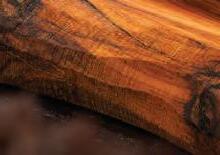


What Stauer Clients Are Saying About Our Knives


“Outstanding knife of high quality and a great price. I now have a number of your great cutlery in my growing collection!”
— Robert F., Richardson, TX






We know you. You’re not interested in everyday, run-ofthe-mill, common cutlery. You want something with a story, a unique feature that you can brag about. We’ve got just the thing for you. Our Mighty Conifer Knife is a unique tool with a Damascus steel blade and a handle crafted from an enhanced and stabilized natural pinecone. While our competitors are charging hundreds for similar knives, we’re offering the Mighty Conifer for JUST $99! Tat’s what we call our Stauer Impossible Price.
JOIN MORE THAN
PEOPLE WHO COLLECT STAUER KNIVES
Each pinecone — and therefore, each knife — has its own unique characteristics. And the back of the handle features hand tooling, a further demonstration of each piece’s individual nature.
Te blade is nothing to scoff at either. Constructed of Damascus steel, a modern reworking of the legendary steel forged by ancient swordsmiths, this nearly 5-inch blade features 256 layers of steel that have been folded on top of each other to increase its durability. Our competitors are charging hundreds for boring, run-of-the-mill knives with no features worth bragging about. We’re asking JUST $99 for a knife unlike any you’ve seen before!
With its full-tang construction and high-quality genuine leather sheath, the Mighty Conifer Knife is the perfect blade for the

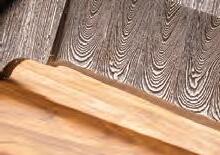


Impossible Price





person who wants to stand out. CALL NOW! If you’re one of the first 700 587 callers for this ad, we’ll throw in a pair of Stauer 8x21 Compact Binoculars — a $99 value — ABSOLUTELY FREE! Satisfaction guaranteed or your money back!
Knife Specifcations:
• 9 ½" overall length. Full-tang construction
• Damascus steel blade and natural pinecone handle
• Genuine leather sheath
Mighty Conifer Knife


EXCLUSIVE FREE
Stauer 8x21 Compact Binoculars a $99 value with your purchase






$299 $99* + S&P Save $200
*You must use Insider Offer Code: MCK186-01 to get this price. California residents please call regarding Proposition 65 regulations before purchasing this product.
1-800-333-2045
Your Insider Offer Code: MCK186-01

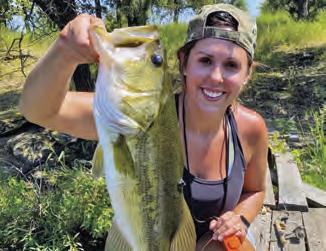


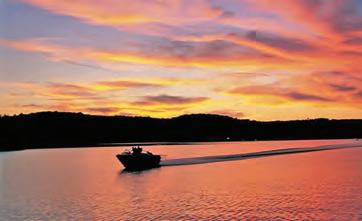

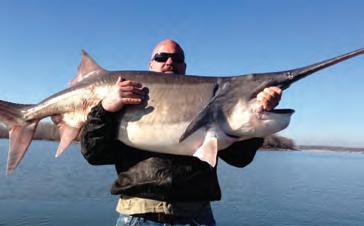
With more than 60,000 surface acres and 1,300 miles of shoreline, Grand Lake O’ the Cherokees is one of the largest outdoor destinations in Oklahoma. Located on the Grand River, the lake is hugely popular with boaters, fishermen, campers and anyone else who loves spending time in the great outdoors. Anglers are sure to have a blast searching for largemouth bass, white bass, crappie, channel catfish, bluegill and the rare paddlefish on Grand Lake waters. And Grand Lake’s shores are lined with so many unique attractions, shops, restaurants, state parks and casinos that seeing everything in one trip is next to impossible. There’s truly something for everyone to love in the Grand Lake Area!

Discover all the fun things to see and do in the Grand Lake Area as well as places to stay, places to eat, festivals and more at GrandLakeFun.com


